




















AN expert in home renovation, Kim Persson, director and founder of Renovation Matters, knows the power of strategic renovations when it comes to selling your home.
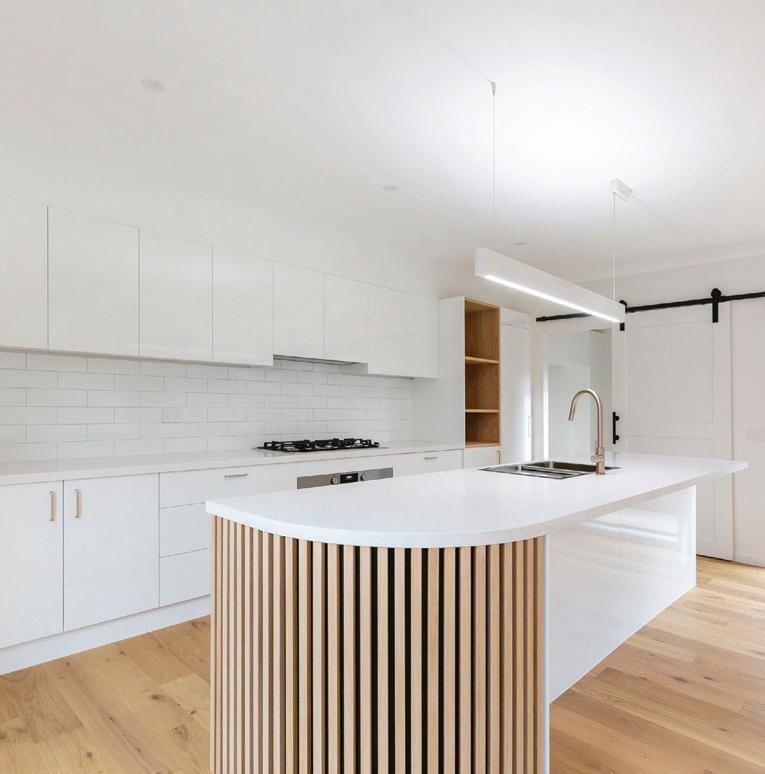
“Our residential property preparation service takes the stress and hassle out of renovating a property for sale in Canberra. We do the heavy lifting for you – from renovating your property to assisting you in achieving a healthy sale price. The beauty of our service is that we can cover the upfront costs of your renovation, which is repayable at settlement.*” she says.

No job is too big or too small for Kim and her team, and she can also help refresh, repair, renovate and even extend homes for people who want to stay and enjoy their current property, bringing better functionality, style and comfort to her clients’ homes.
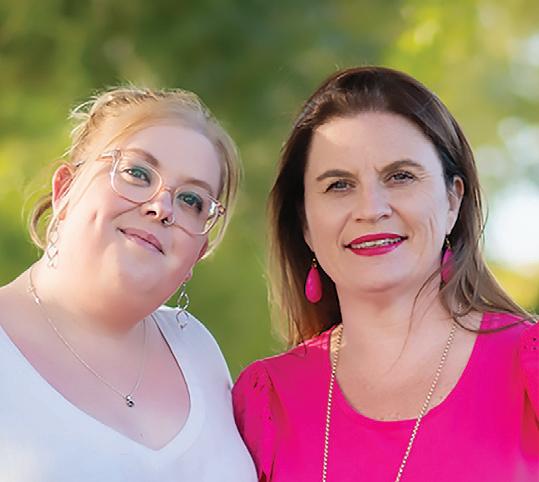
“I am delighted to welcome Amy Gannon to the Renovation Matters team as our operations manager. She brings a wealth of experience and knowledge in the Canberra real estate market as well as exceptional organisational and project management skills.” *conditions apply

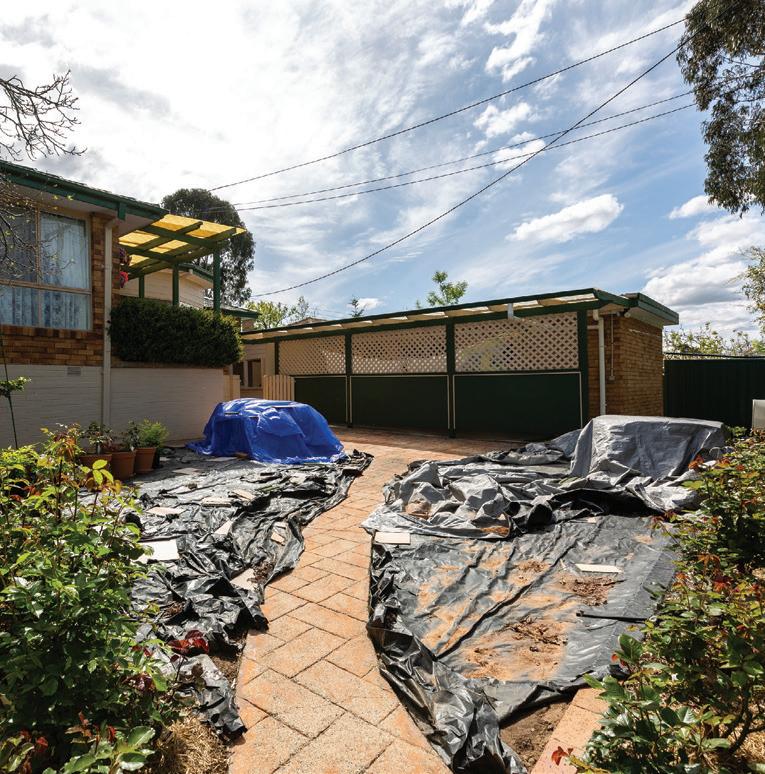
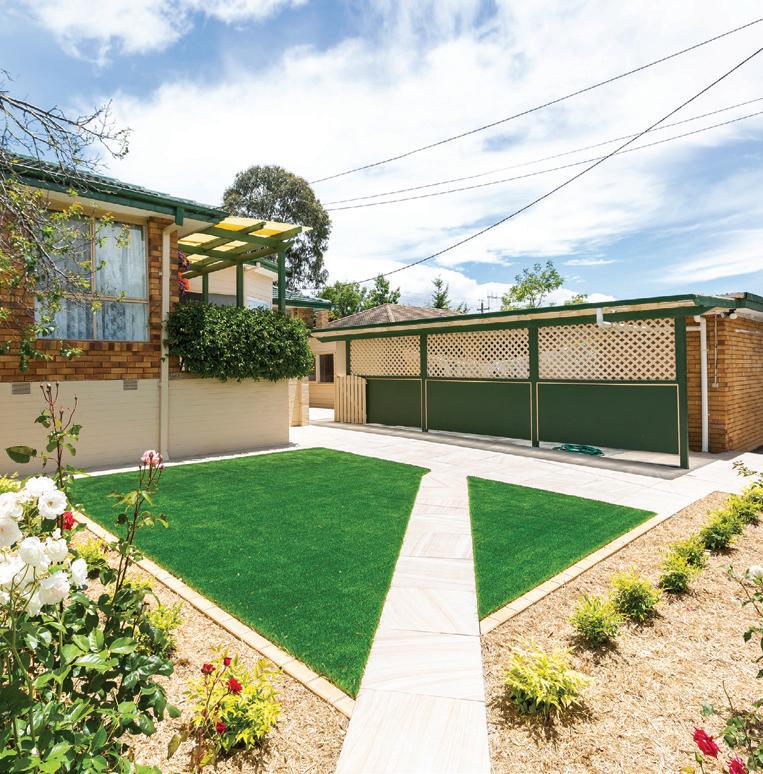







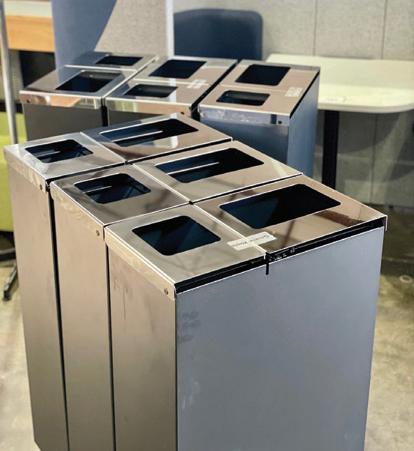



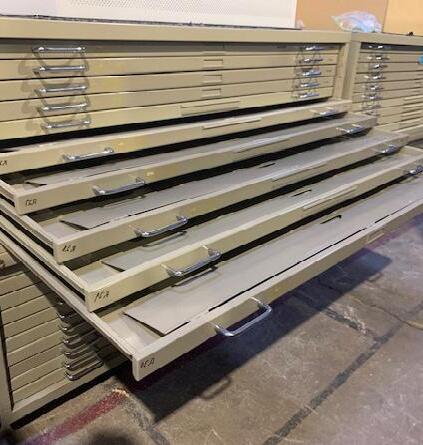

JODY Mudge was diagnosed with a stage four metastatic cancer on the base of his tongue in 2016, and a secondary cancer was found to have spread from his nasopharynx to multiple nodes throughout his neck.
Now, Jody has just celebrated six years since treatment finished, and is getting ready to celebrate in a major way.
“I’ll be taking part in a 10-kilometre mountain bike ride at Mount Majura, raising funds and awareness for Head and Neck Cancer Australia,” he says.
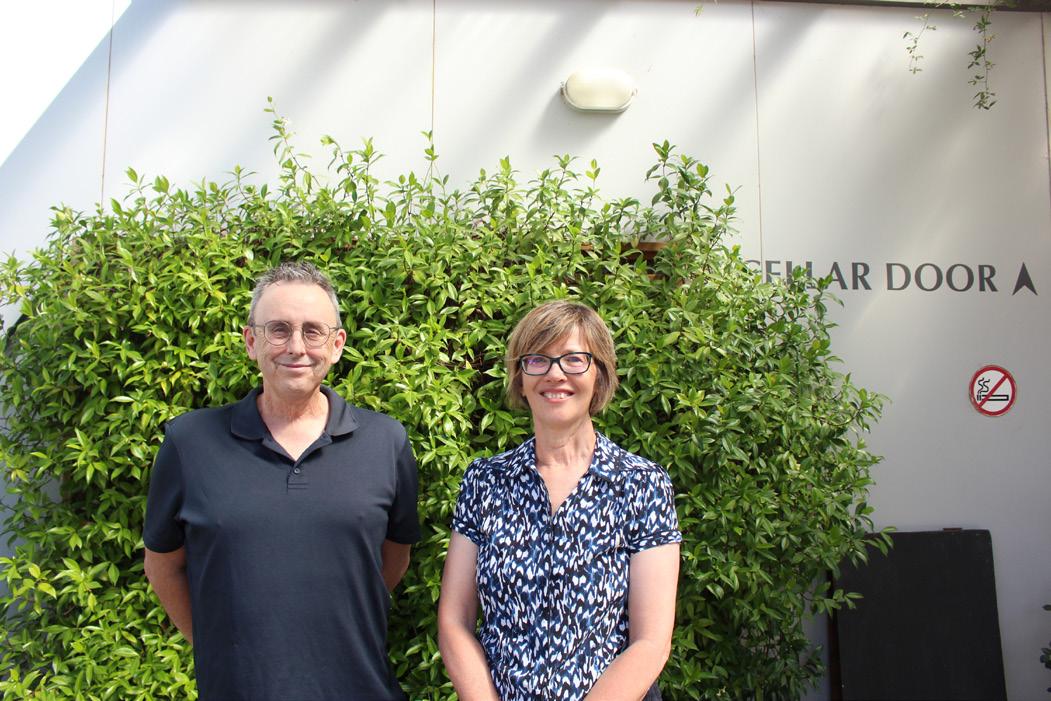
The 2023 Capital Classic offers a 50km, 25km or 10km mountain bike ride to raise awareness and funds for the charity Head and Neck Cancer Australia.
Only in recent weeks has Jody, 51, picked up his bike for the first time since his diagnosis to squeeze in as much practice before the ride on April 2.
Having previously worked as a registered nurse at Canberra Hospital, Jody and his colleagues used to ride and chat to decompress.
“When I heard about the Capital Classic I was very nervous. There was no way I could ride 25 kilometres. I’m still struggling a bit physically,” says Jody.
“Then it was mentioned there would be a 10-kilometre ride option, and I thought I just had to find the motivation.
“I want to show people that even after cancer, people can do this; we can get back to hobbies we enjoyed before
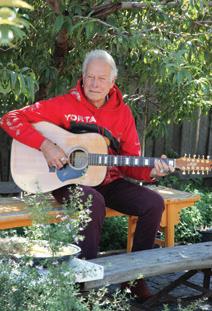
the diagnosis.”
Jody, of Calwell, says the first sign of cancer was a lump that developed on the side of his neck.
“I went to my GP to get it sorted, and then there was the shock and horror,” he says.
“I had quite a large tumour that nobody really wanted to operate on, so I was given quite aggressive radiation, and chemotherapy to intensify the radiation.
Since 1993: Volume 29, Number: 12
Managing director: Kate Meikle, kate@citynews.com.au
Sales director: Tracey Avery, 0477 939999
Senior advertising account executive: David Cusack, 0435 380656
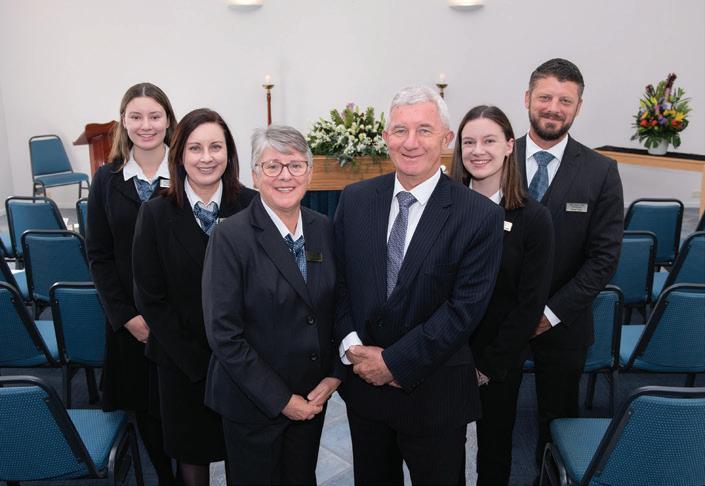
Advertising account executives: Damien Klemke, 0439 139001
Tim Spare, 0423 381691
Editor: Ian Meikle, editor@citynews.com.au
Journalist: Lily Pass, lily@citynews.com.au
Arts editor: Helen Musa, helen@citynews.com.au
Production manager: Janet Ewen

Graphic Designer: Mona Ismail
Proof reader: Glenda Anderson
Distribution manager: penny@citynews.com.au
things away from you.
“You have to get used to swallowing and eating. I’ve had to see a speech pathologist. I didn’t realise how big these were, and how important, until I couldn’t do it,” says Jody.
The brainchild of Carolyn, the Capital Classic’s purpose is to build engagement and a support base in the broader Canberra community.
“Head and Neck Cancer Australia organised a ride in Wollongong last year, which was very successful,” says
“I was talking to my cousin, Nigel Harvey, who said we should do something in Canberra. Nigel is a mad keen cyclist himself. He worked for PSI Cycling, who is one of our sponsors. He was the inspiration.
“We were keen to use the Majura bike trails for the event, and Mount Majura Vineyard is just such a beautiful entry point, so we’re very grateful Majura Vineyard was prepared to sponsor the event,” she says.
Head and Neck Cancer Australia CEO Nadia Rosin will be taking part in the ride, signing herself up for the 10-kilometre option.
“We are the only national charity in Australia supporting people with head and neck cancer,” she says.

Nadia, who was brought up in Farrer, is looking forward to getting an important message across.
“A lot of people assume head and neck cancer is due to smoking and drinking alcohol, but those instances are decreasing. Human papillomavirus is now responsible for 70 per cent of a certain type of throat cancer,” she says.
“Two out of three people diagnosed with head and neck cancer are male, and there’s an increasing incidence in younger people being diagnosed.”
More at support.headandneckcancer. org.au

“Those that fail to learn from history are doomed to repeat it.” The words of Winston Churchill ring true for the government of the ACT.
The Labor and Greens parties are heading for electoral defeat at the next election just as Labor did in 1995. The cancerous yellow identifiers on the Draft Canberra Plan, that will tear away at the Canberra we know and love, have all the hallmarks of a previous attempt to adopt an extensive infill policy. The approach at the time proved hugely unpopular in the years leading up to the third ACT election.
Then Planning Minister, Bill Wood, was attempting to be open and transparent about the planning future of Canberra. His planning advisers persuaded him that the most efficient way to meet Canberra’s development needs was to earmark every area of infill available.
These were coloured pink on a draft map of Canberra and an argument put that they were absolutely necessary for the future development of the city. Although the language may have varied at the time, they were also earmarked for “future investigation”. The equivalent of the current yellow malignancy in the current draft plan was referred to at
that time as “the pink bits”.

Just like the yellow bits on the current plan, the pink bits became a rallying point for almost every established suburb in Canberra. As recently as the year 2000, for example, the Weston Creek Community Council recorded in its minutes an answer about the historical threat to open spaces.
The minutes include a response to a question “regarding the change in the territory plan of public open spaces to residential in 1993”. The response included: “The pink bits were undefined land use for later
zoning. As there were significant protests regarding the clarity of the intended use of the ‘pink bits’, these were defined in the final territory plan”.
The outcome of the heated debate regarding the pink bits eventually meant that the Carnell Liberal government would come into power in early 1995 after a very poor electoral performance by the Labor government.
Even five years later, there were concerns from residents regarding development applications on green spaces such as ovals and open space areas such as that next to Streeton Drive in Weston Creek. The former “pink bits” in the Draft Territory Plan continued causing significant angst amongst residents for many years.
A key political issue through the years preceding the 1995 election was framed around those “pink bits”. In taking lessons from history, it ought to be noted that the “pink bits” of that era were minor compared to the great swathe of yellow malignancy that provides such a broad threat to existing green spaces, ovals,
playgrounds, parks and existing homes across Canberra.
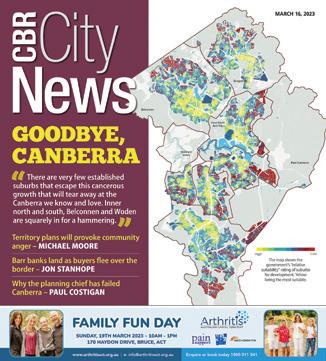
The consultation process at the time was supposed to ease the fears of Canberrans about the impact. The same has been true for the current process that has been pursued by the planning directorate over the past few months.
“The Canberra Times” reported in 1992 chief planner George Tomlins arguing: “There were 1500 calls on the ACTPA’s [ACT Planning Authority] hotline, and 800 people attended the seminars and workshops, resulting in 1020 written submissions”.
This was just the start of a long process. He added: “That’s not including the furore over the controversial investigation areas or ‘pink bits’, which resulted in a myriad of community action groups determined to save their favourite park or open space from urban infill.”
Journalist David Sibley wrote that
“until the ACT government panicked and pulled the ‘pink bits’ out of the plan during the run-up to last February’s election, debate over it had become probably the hottest issue of a fairly lacklustre campaign”.
The issue remained on the table with individual residents and community groups losing faith in the consultation process and in government itself.
The main lesson from history is that the yellow cancer that is set to engulf our city will have much broader ramifications than simply land planning.
The last word belongs again to Winston Churchill: “Study history, study history. In history lies all the secrets of statecraft”. It is a message that will be ignored at the risk of their peril for Labor and the Greens.
Michael Moore is a former member of the ACT Legislative Assembly and an in dependent minister for health. He has been a political columnist with “CityNews” since 2006.
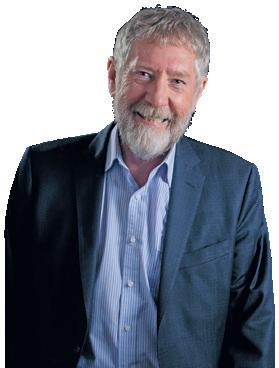
The main lesson from history is that the cancerous yellow identifiers on the Draft Canberra Plan set to engulf our city will have much broader ramifications than simply land planning.show the government’s “suitability for development” rating.
In February, 19,000 people finally received news that they had been waiting years for. They were to be granted permanent visas. But this has been denied to a further 12,000 people, who, after as long as 10 years, still have no security nor certainty about their or their children’s future.
All have suffered under Australia’s harsh policies, and all are separated from family. They are in limbo. Enough is enough!
Join us at the Palm Sunday rally and add your voice to the call for permanent visas for all refugees.

Speakers:
Senator David Pocock
Rev. Dr. Katherine Grainger, Senior Chaplin, Radford College
Zahra Hashemi Barat, refugee from Iran
Authorised by Canberra Refugee Action Campaign and ma ny other refugee advoca cy groups A ustralia-wid e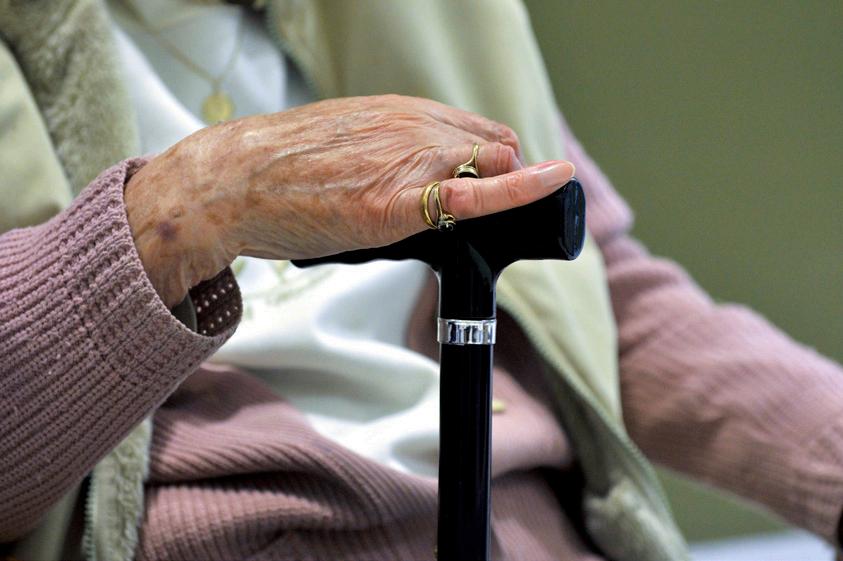 By Farid Farid
By Farid Farid
GROWING up speaking more than one language can help delay the effects of dementia.
It’s good news for those living in Australia’s many culturally diverse households, according to a study led by University of Sydney clinical research er Amira Skeggs and published in the prestigious “Journal of Neurology”.

Around 29 per cent of the Austral ian population is born overseas and researchers found being multi-lingual can act as a neurological shield in deal ing with dementia.
The study focused on one of three types of the disease known as behav ioural variant frontotemporal demen tia (bvFTD).
Frontotemporal dementia refers to a set of younger-onset dementia syn dromes, which are typically diagnosed before the age of 65.
Last month, US action star Bruce Willis announced he had been diag nosed with frontotemporal dementia.
The progressive neurodegenerative disease affects brain areas responsible for behaviour, personality, language and emotions.
“When it comes to neurodegenerative syndromes like bvFTD, culturally diverse people can have a later onset of the disease compared to monolingual Australians because they have other

resilience or cognitive reserve,” Ms Skeggs said.
Cognitive reserve is a kind of a neural fort that helps the brain weather neurodegenerative disease before symptoms of mental decline kick in.
“There is a tendency for culturally diverse patients, particularly
higher levels of cognitive reserve,” Ms Skeggs said.

“Multilingualism, education, working in a complex profession for a long time, all of these factors add up and make you more resilient to cognitive decline – up to a point”.
Researchers compared clinical
symptoms of 107 people separated into three groups: Australians who speak only English, another group that spoke English as their first language and another that spoke a different mother tongue growing up.
“Comparisons revealed that the group who spoke a non-English first language performed worse than the other groups on verbal tests but better on non-verbal tests,” Ms Skeggs said.
“The poor verbal performance in the non-English speaking group is probably influenced by cultural biases within current clinical tests, so the reason they are showing decline may not actually be because they are de -

Ms Skeggs also found that bilingual patients can still communicate with loved ones in a language other than English, which can help them navigate the disease as they deteriorate.
“We had one Vietnamese patient who spoke English perfectly before disease onset, but by the time the disease had progressed, he had completely lost his English ability and could only communicate in Vietnamese, even though he had been speaking English perfectly for over 50 years,” she said.
She recommended that clinics collect information about a patient’s cultural background and ability to speak multiple languages in order to offer alternatives during diagnosis such as having a translator. –AAP
KATRINA Fanning AO PSM has been named Canberra Citizen of the Year 2023 for her dedication to the Aboriginal and Torres Strait Islander community.

Ms Fanning – a Wiradjuri woman –contributed to the community Head of Secretariat at the Coalition of Peaks on Closing the Gap, director at Coolamon Advisors, a past chair of the ACT Aboriginal and Torres Strait Islander Elected Body as well as her contribution to rugby league at a local, national and international level.
Following success as a rugby league player, she was appointed chairperson with the Australian Rugby League Indigenous Council in 2012, was the president of Australia’s Women’s Rugby League, has been a director of the Canberra Raiders since 2018 and is president of the Canberra Women’s Rugby League.
A valid and up-to-date Will can help reduce stress for your family & friends, limit administration costs, and lessen the possibility for dispute over your estate.
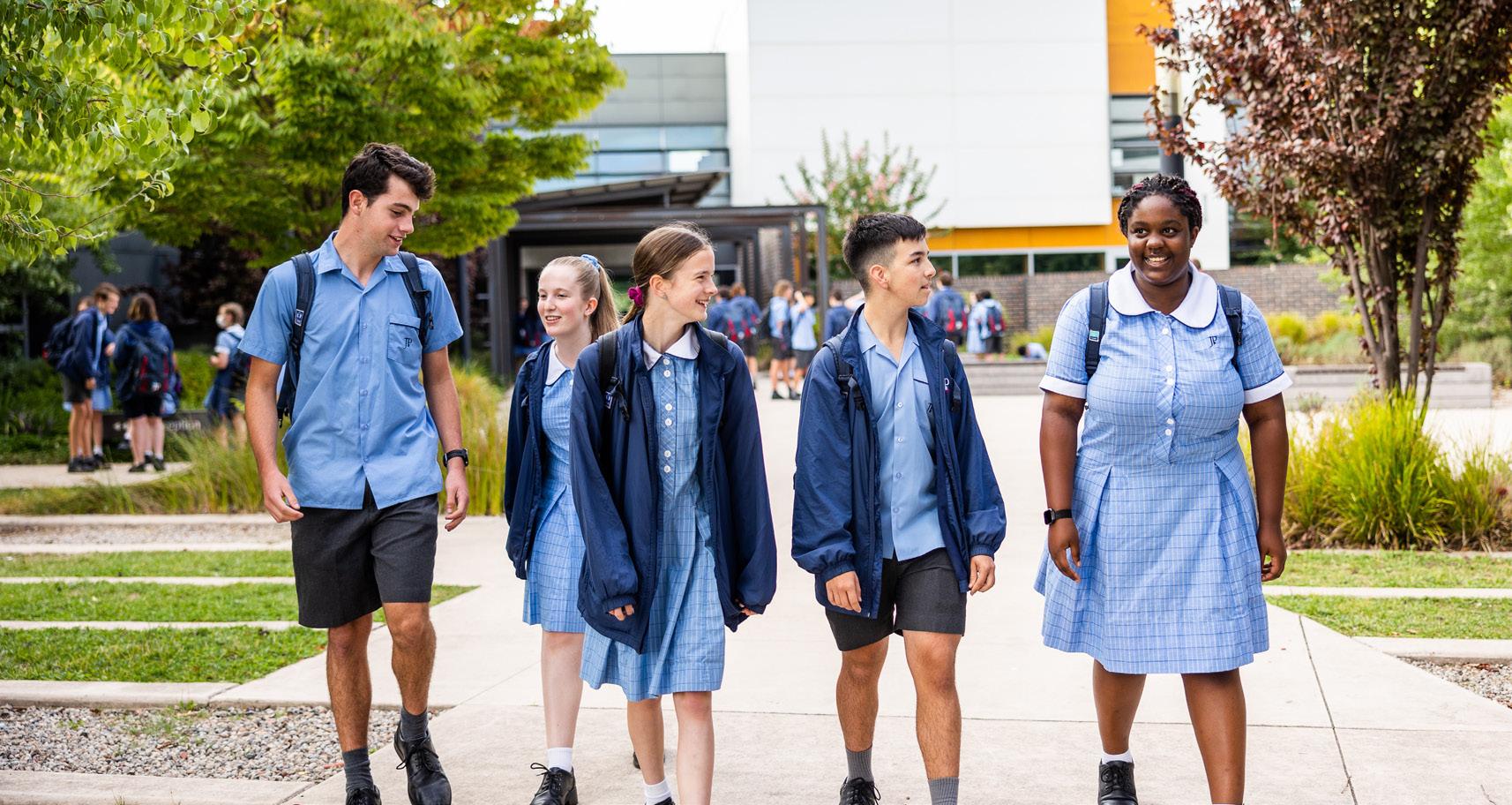
St John Paul II College (JPC) is a welcoming and inclusive learning community where diversity is embraced and learning outcomes are maximised for each individual. The college is a flagship in education and provides a unique, innovative educational environment where all students can flourish. The colleges core principles of Justice, Peace and Courage support the holistic development of students as they navigate an ever changing world.
Key dates:
• Open Evening | Thursday 30 March 2023 commencing at 4.30pm, last tour at 6.30pm
• School Tours | Small group tours are available during May
• Senior College Expo (Year 9-12 Students) | Wednesday 17 May 2023 from 4.30-7.00pm
• Try JPC Day (for Year 5 & 6 2023 students) | Friday 19 May or Monday 22 May
For more information and for bookings, visit our website www.jpc.act.edu.au
Be active… Be creative… Be inspired…
“NO child will live in poverty” is often used in scorn – as a put down – to refer to a goal or a commitment that is thought to be unrealistic or unachievable or too idealistic.
The statement, made by then prime minister Bob Hawke 35 years ago, included an ambitious timeframe of just three years, which could never be met because of how we define poverty and how we measure it.
The commonly used definition is based on a count of people/ households who are below a “poverty line”, which is assumed as half (50 per cent) of the median income – the so-called Henderson Poverty Line.

Therefore if, say, the median household income is $2400 a week, a household with weekly income below $1200 would be classified as living in poverty. By definition then, there will always be households, and children, living in poverty and its eradication is simply impossible.
In light of this, the Melbourne Institute (Applied Economics and Social Research) publishes poverty line figures for households in 20 different circumstances including, for example, single people, couples and single parents or where the head of the income unit is employed or not.
For the March 2021 quarter, the poverty line estimates – and the institute stresses these are
from $471.20 ($281.17 excluding housing costs) for a single person to $1405.63 ($1119.77 excluding housing costs) for a couple with four children.
Accordingly:

• some households on annual income in the order of $90,000 will be deemed to be in poverty depending on their family circumstances;
• the community standard

level of consumption (need) appears low with a single person expected to survive on just $40 a day, that is, if they can find accommodation for $190 a week; and
• housing costs would be a significant determinant of whether a household is in poverty.
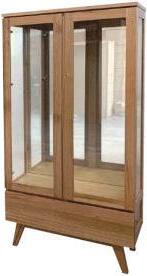
It should also be noted that the estimates published by the Melbourne Institute relate to the national median income, adjusted for household characteristics. Cost of living varies across Australia, and the poverty line needs to be adjusted for a high-income, high-cost jurisdiction such as the ACT.
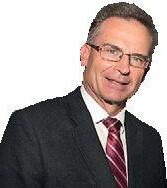
The incidence of poverty is clearly not readily measurable from the income or household composition data published by the ABS.
In general, poverty is masked and nowhere more so than in the ACT, where there is no particular “struggle street” and poverty is effectively hidden.
The University of NSW, in collaboration with ACOSS, also publishes a “Poverty in Australia” series. Its latest snapshot report provides the incidence rate of poverty as well as its depth (ie, the extent to which households are below the poverty line), and its trends.
Among the key findings of the report are that in 2019-20, 13.4 per cent of the people in Australia lived below the poverty line, which amounts to 3,319,000 people. One in six, or 761,000 Australian children (16.6 per cent) live in poverty. The average poverty gap was in excess of $300 a week.
In Australia, because of our social-security net and income-support system, one would expect that the abovementioned studies relate to relative poverty, rather than absolute poverty.
in the UNSW/ACOSS report reflect severe material deficit rather than just relative disadvantage, for example, working homeless or single mothers living in public housing being able to afford only a single meal a day.
Compounding the problem is the fact that poverty has been completely removed from the public sector lexicon – its study and discussion has been left to academics.
Our search of the most recent ACT budget papers showed not a single mention of the word “poverty”. We found two mentions of “income inequality” in a single paragraph claiming that it has decreased, and hence is apparently not a matter of concern to the ACT government.
across all deciles.
Poverty is confronting in its manifestations and its implications, but it is generally hidden in the seemingly homogenous Canberra and the apparent affluence reflected in high-level statistics.
It would be wrong to think or suggest that poverty does not exist in the ACT. In fact, as noted above, the national poverty lines would need to be adjusted upwards for the ACT due to its relatively high median income. There is no doubt that some ACT households on the national average income ($121,000) are living in poverty.
It is not clear to us why the ACT government did not deign to mention the word “poverty” in its major annual policy document, the budget, or why it has opposed repeated attempts by the Liberal opposition to establish an inquiry into poverty.

However, the ABS data on household income and its distribution provides a different picture. Here we acknowledge that the government may have been misled by a statistical limitation of the measure it utilises. Chart 1a shows the average annual growth in household incomes for each decile (10 per cent) in the ACT over the period 2013-14 to 201920. Chart 1b provides income growth at the national level.
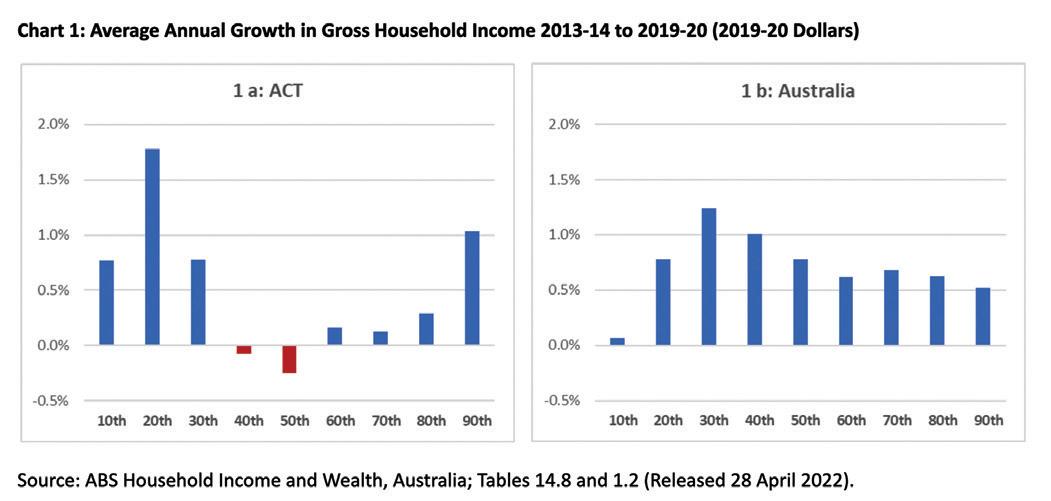
The charts highlight a problem of the depleting middle in the ACT where incomes at the 40th and 50th percentile decreased at an average rate of 0.1 per cent and 0.2 per cent a year respectively over the six-year period. No such problem is evident at the national level where gross
Chief Minister Andrew Barr is on record insisting poverty is a consequence of inadequate social security payments and hence a Commonwealth Government responsibility (over to you, Katy).
This is beyond the usual blame shifting and suggests an egregious lack of understanding of the causes of poverty. Social security support is, of course, vital, but there is much that state and territory governments do that drives people into poverty.
In summary, that some people have more than others, and some have relatively less, is not a moral problem in itself – that some people do not have enough to get by is a moral challenge that we worry the people of Canberra do not take seriously.
“There is no doubt that some ACT households on the national average income ($121,000) are living in poverty,”
JON STANHOPE and KHALID AHMED, who wonder, despite repeated urging from the Liberal opposition, why the ACT government refuses to look into poverty.Chart 1: Average Annual Growth in Gross Household Income 2013-14 to 2019-20 (2019-20 Dollars) Source: ABS Household Income and Wealth, Australia; Tables 14.8 and 1.2 (Released 28 April 2022).
Poverty is hidden in the seemingly homogenous Canberra and the apparent affluence reflected in high-level statistics.
THIS time last year, Sahar Ghasemi was a happy young woman. Like thousands of others around Australia she was starting university.
She had won a scholarship to pay her fees for an arts/law degree. Seven weeks into her first semester, she turned 18. Then she was disenrolled –her visa doesn’t allow her to study in Australia after that age.
Sahar is a refugee from Iran. She came to Australia by boat as a small child with her parents.
The Australian government kept them detained on the tiny island of Nauru for five years. One of three children, her brother was born there. The family suffered terribly and were eventually brought to Australia on medical grounds. The two daughters had become suicidal.
While the Albanese government has announced that 19,000 refugees on temporary visas will be allowed to apply for permanency, Sahar is one of about 12,000 in Australia who have been excluded from this decision. Many of these people have not seen their children, parents or spouses in at least 10 years. From places such as Iran, Afghanistan and Myanmar, they clearly cannot go back. But
than the five long years on Nauru, but honestly, the life in Australia where we have no hope of a future is killing us, slowly.
“My little girls had five years of torture in the detention camps, now one of my daughters, despite having a scholarship, has been told she has no right to study. As a mother, I despair for them, but as a mother, I must keep fighting for our human rights.”
A few months ago, Zahra and Sahar met with the independent senator for

the ACT, David Pocock, who then asked questions in parliament about her and others in her situation.
The response from Murray Watt – representing the Minister for Immigration in the Senate – was that Labor had inherited a backlog of cases that would take time to clear. The answer was disingenuous to say the least. In fact, Labor’s current policy is that they will never be able to live here normally. It is applied to those, like this family, who came by boat after July 19, 2013 and were sent to Manus or Nauru. That was when Kevin Rudd made his announcement that those who arrived from that date would never be able to settle in Australia. It remains the government’s position.
A letter sent to people in this situation last September and October from the Department of Home Affairs made it clear that the right to apply for permanent visas definitely did not apply to them.
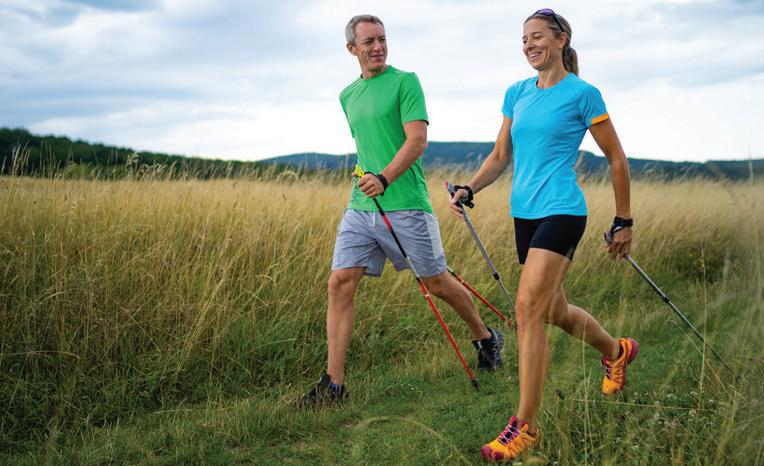
Zahra and Sahar are part of what the department calls the “transitory
persons” group – about 1200 people who arrived after Rudd’s declaration and who then had to endure detention camps on Manus Island or Nauru.
Another 9000 people who arrived earlier have failed the so-called “fasttrack” procedure for determining refugee status. It is not fast; an additional 2000 people are still waiting for resolution of their status years after applying. Nor is it a fair “track” to refugee status. Introduced by the Coalition in 2014, it immediately led to a massive reduction in successful applications. It involves a 60-page form in English. Just five pages of additional documentation are allowed.
The Coalition removed the right to legal help in filling it out. There is only one interview with the applicant – often by phone and sometimes for as little as 15 minutes. Furthermore, with “fast track”, the appeals process to challenge negative outcomes was changed so that the appeals body does not re-interview the applicant or consider new information not provided in the first application. Successful appeals plummeted. “Fast track” did what it was clearly
designed to do – exclude people from refugee status.

The Labor Party has recognised that “fast track” is unfair and should be abolished. The platform adopted at its 2021 Federal Conference says so. Yet, in government, it continues to refuse justice to those who have fallen foul of it. So, adding these categories – those who have failed “fast track”, those who are still waiting for a determination, and those who arrived after July, 2013 – there are over 12,000 people still in the “limbo” that Zahra described after 10 years or more.
How can her family go back to Iran? They would certainly be imprisoned on arrival.
Senator Pocock and Zahra will speak at the annual Palm Sunday rally for refugees on April 2 in Canberra. The rally will demand that this limbo be ended and that permanent visas be issued to Zahra and the thousands like her who Australian policy has deliberately failed.
John Minns is emeritus professor of Politics and International Relations at the ANU and a member of the Refugee Action Campaign in Canberra.
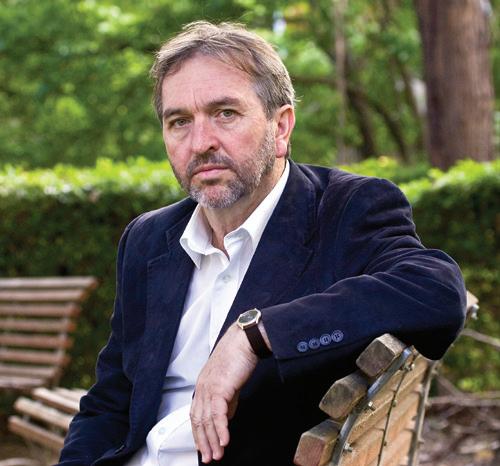
I didn’t think anything could be worse than the five long years on Nauru, but honestly, the life in Australia where we have no hope of a future is killing us, slowly.
UNFORTUNATELY for the city’s future, the ACT chief planner seems not to be known for taking biodiversity seriously.
Others do, although their efforts may be a little too polite to make any impact on this Greenslabor govern ment.

On February 13, the Conservation Council of the ACT hosted their launch of a “Biodiversity Network Paper”.
To quote: “The ACT, like the rest of Australia, is battling an extinction crisis. Approximately 6.2 per cent of Canberra’s mature trees have been removed in the past five years; our beloved faunal emblem, the GangGang cockatoo is endangered; and our natural areas are at increasing risk of development and degradation.
“To combat biodiversity loss across the territory, the Conservation Council’s Biodiversity Working Group and Friends of Grasslands have co-authored a paper that outlines a key part of the solution to protecting and enhancing the ACT’s remaining natural places: ‘The Biodiversity Network’.”
The announcement sounded like a serious move to deal with the biodiversity of this city in a landscape. This network has highlighted the necessity to look after endangered
We are able to assist in negotiations
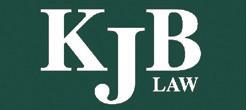
grasslands, old trees and associated biodiversity and that they should be protected from the effects of development. This effort to protect biodiversity is to be celebrated – if it delivers.
But there’s a problem. While the paper links to urban biodiversity issues of the whole city, it does not address these. This has been an historic fault of the Conservation Council in Canberra. It takes a cautious approach when it comes to speaking up about the damaging deficiencies of Greenslabor’s policies on urban biodiversity, green infrastructure, urban climate and related issues.
Its “Biodiversity Network” paper mentions policies such as the Urban Forest Bill as if these matters are being well attended to. They definitely are not and most likely will be even
less so if the chief planner’s and the chief minister’s new planning bill is passed by the ACT’s Greenslabor politicians.
The current ACT planning systems make little mention of biodiversity issues. The lack of priority on biodiversity is evident in what is being delivered – new heat-island suburbs.
There are also the outrageous clearances happening in established suburbs. Almost everything is cleared for oversized houses. The result is a huge loss of gardens, shrubbery and trees – former sites for diverse biodiversity. Housing ACT is a champion at clearing everything off established properties.
Given the current heightened awareness to act on climate, it would have been logical for the planning
reforms to place biodiversity as a high priority within future developments.
If you searched hard, it was possible to uncover the occasional tokenistic word or two about biodiversity – but nothing serious was being proposed.
Unfortunately, the chief planner has completely missed the point. He is not exactly a success as the head of two important agencies, the ACT government’s planning directorate and the ACT government’s planning authority. The lack of success being measured by what is missing in his muddled documentation. He is failing in the stewardship for the city’s biodiversity and therefore in his care for residents.
There is not much strong advocacy in the Conservation Council’s recent documentation. There is little on record that indicates that it strongly objects to what Greenslabor is proposing as the replacement of the former planning bill.
Maybe that advocacy was always designed to endorse the little Greenslabor has been doing about enhancing Canberra’s biodiversity. That would be pleasing to the ACT environment minister and her ACT
Greens colleagues.
The proposed bill is not about planning. It is going to undo the city’s urban biodiversity.
If these planning bills are accepted, and given that the Conservation Council has not been serious about opposing it, anything it says in the future on the topic will be too late.

When considering this city and its urban biodiversity, unfortunately the ACT’s Conservation Council has positioned itself as irrelevant to the future debates on these important issues.

If the ACT environment minister and the other ACT Greens politicians endorse the chief minister’s model of de-regulated development, then the only Gang-Gang in her neighbourhood will be the one on the North Ainslie School billboard she drives past regularly. Surely, we can do better than that.
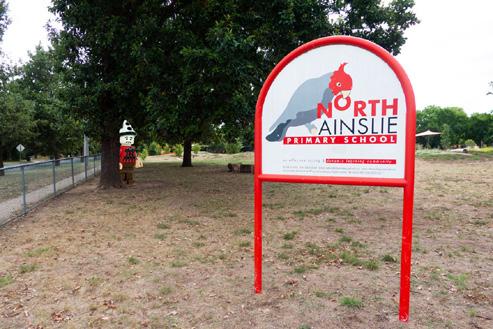
Paul Costigan is a commentator on cultural and urban matters.



When considering this city and its urban biodiversity, unfortunately the ACT’s Conservation Council has positioned itself as irrelevant to the future debates.The future’s last Gang-Gang in town? The one on the North Ainslie Primary School sign. Photo: Paul Costigan
THE ramp leading from Parkes Way eastbound on to Commonwealth Avenue southbound is closed until March 28.
As part of work on raising London Circuit, the ACT government says full ramp closure is required to safely carry out utility works, allowing for much of the excavation to be completed at once.
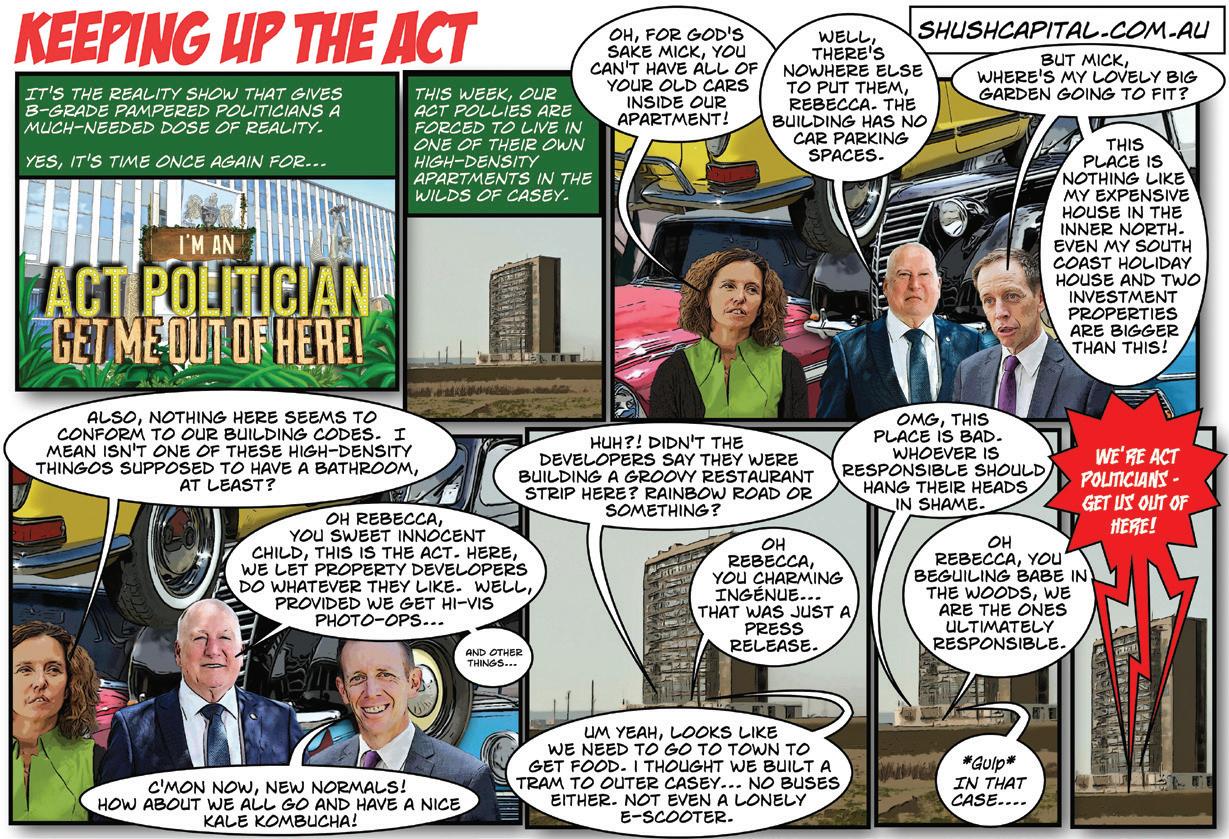
Work will take place 24 hours a day while closures are in place.



RELAY for Life Team, the Bold Bandannas, is holding a stall at the Fyshwick Markets (within Ziggy’s shop), 8am-5pm, on March 25 where members will raise funds for cancer research from the sale of preserves, pickles, chutneys, lemon butter and a range of sugar-reduced items.
HEATHER Hart, from the Stroke Foundation, will discuss risk factors, awareness and symptoms as well as stroke prevention, at the next lunch meeting of the Weston Creek VIEW Club. It’s at the Canberra Southern Cross Club, Woden, from 11.30am, on April 4. Lunch is $38 and interested ladies and visitors welcome. RSVP to 0408 864616 by March 30.
Community notices to: editor@citynews.com.au




WHILE it appears that the Minister for Planning, Mick Gentleman, doesn’t listen to the numerous submissions from community groups and homeowners raising concerns regarding the deregulation of controls and “up-zoning” with permission for greater density proposed in the new planning framework, he has received feedback from the community.

While providing special rules for the hundreds of Mr Fluffy blocks by allowing separate-titled, dual occupancies on the many blocks in established areas that were over 700sqm.
This was to give developers a bit of a leg up and a higher land price for the government. The resulting builds weren’t cheap, but this provides an indication of what was going to be allowed in established areas as part of the new zoning changes.
He was reported in the media to have commented: “We had feedback then from the community who live in these areas saying: ‘Why can’t I do that now?’.”
Mr Gentleman went on to say: “The conversation actually came from older people saying: ‘I still want to live in the area that I have, but I might want to build something else on my block, maybe my kids might move in and I’ll stay in my house’.”
This was a heart-rending story. Fair enough, the minister has only had the planning gig for 10 years so he probably didn’t know to inform these oldies that they are currently allowed to build a dual occupancy on their RZ1 block (800sqm +). They just can’t separately title the blocks and flog one off.
Minister, we know you’re using advanced research and consultation processes to gauge what the community really wants in the proposed planning framework, but I hope your consultation is not the same 5 per cent of the community that proposed apartments and townhouses are built with no car parks.
Ian Hubbard, via email
HAS anyone else noticed the explosion of unsightly graffiti vandalism in Canberra?
I think the southside must take the cake, but I would be interested to hear from the northsiders.
I think that the ACT government has just given up. Every utility box, underpass, overpass and many fences are covered with this unsightly mess.
I am a proud Canberran, born and bred, but this graffiti blight makes me angry and sad to see what has happened to our once proud bush capital.
R Nano, via email
THERE have been numerous letters of despair about the planning situation in Canberra. No longer will we be the bush capital but a poorly planned city with no regard for the changing climate and the environmental situation.
Paul Costigan’s article this week not only sums up the dire situation with our planning authorities and ACT politicians but puts forward a possible solution.
It beggars belief that there is no way Canberrans can be heard and their suggestions taken on board. Just like the West Basin debacle, we were told well before the general public knew that the lake would be filled in and apartments plonked there.
We were told some things are nonnegotiable. This non-negotiable attitude has now reached new heights. No wonder we have given up responding to endless badly written planning documents.
Penny Moyes, Hughes
AS many pick themselves up after trying to respond to the final tranche of “outcomes” planning reform documentation and their likely consequences at suburb and street level (“Why the planning chief has failed Canberra”, CN March 15), they may wish to reflect on the chief planner’s online homily to the broader community on August 9, 2019:
“My key focus as ACT chief planner has always been ‘the people’ and the vital contribution they can and do make to planning this great city… Your feedback plays a key role through your unique ability to communicate useful observations into issues that may affect your neighbourhood… The community has the collective power to
achieve positive outcomes on development projects. As active community members we can all play a role in planning our city.”


This short-lived series of insights and means of engagement recently disappeared from public sight when, like the current planning system’s processes, the planning directorate’s website was also “refreshed” and pared down.
It is time for all ACT MLAs to come out of hiding on planning matters and start some serious and ongoing engagement with their local constituents, especially those who expressed considered views and concerns in the 400 or so submissions received recently by the planning directorate (“Territory plans will provoke community anger”, CN March 15).
Sue Dyer, DownerIGNORING the fact that the majority of Australia’s inflation is imported, the RBA has slapped a tenth rate rise on the Australian community.
This means it regards the previous nine rises as having been ineffectual. In other words, the RBA has misconstrued the inflation issue, and already got the solution wrong no less than nine times.
A failure rate of that magnitude would send any normal business to the wall. Why do we tolerate it at a national level, whereby this strategy is sending countless numbers of homeowners to the wall?
The government’s review of the RBA, now completed, is expected to report this month.
Let’s hope that it places inflation within a wider context of national economic and personal well being, differentiates between home grown and imported inflation, and identifies the real bases of Australia’s economic strength as areas to foster.
Noting that the terms of three members of the RBA board expire this year, I suggest that the government has an opportunity to break with the past and appoint new members with proven expertise at the macro-economic level.
Paul Varsanyi, KambahMAX Flint (Letters, CN March 9) is obviously not a scientist. He claims that if Australia
miraculously ceased to exist, it would “not make one iota of difference to global warming let alone climate change. He seems not to understand that there can’t be one without the other.
He then concedes “given that slow warming is occurring, whatever the drivers may be, Australia’s priority is to protect its citizens from the possible consequences, not to pursue needless emissionsreduction policies that risk destroying our economy for absolutely zero effect”.
The CSIRO has shown that Australia has warmed by 1.47 degrees C since records began in 1910. That is certainly not “slow” warming: the Intergovernmental Panel on Climate Change, in its Paris Agreement set a medium-term target of 1.50 degrees above pre-industrial levels and carbon neutrality by 2050. Australia has, for all intents and purposes, already broken through the first barrier.
Mr Flint concludes that we must “look to nuclear energy ... before the unsustainable renewables policy sends us broke while disfiguring the countryside.”
Energy experts and scientists are virtually unanimous in concluding that “renewables” with the latest battery technology are by far the least expensive, and now most reliable, form of energy production.
Solar farms cover relatively small areas and leave ample green (or grazing) space between panels; and wind turbines are so widely spaced that there is almost no loss of productivity from the land upon which they are built.
Finally, standard nuclear power stations cost about $10-12 billion and take about 10-12 years to build. Thanks to almost a decade of government inaction, we cannot afford to wait that long.
Dr Douglas Mackenzie, DeakinOBJECTING to the Voice is one thing, but Vi Evans (Letters, CN March 8) is surely aware that it falls within the rules of the constitution (which I presume she supports). The constitution doesn’t set out “details”. It articulates the principle (exampled in Sec 51), which the proposed amendment follows, leaving public and parliamentary debate to occur prior to legislation of its processes.
Nor can government “just do as it likes” unless it has a clear majority in both houses; a very rare event which, if misused,
can still carry heavy political consequences.
As a legal affairs commentator, Hugh Selby (CN March 9), should certainly know better. He makes several flawed observations (such as, “we don’t tolerate discrimination” and cites ACT legislation when the Voice legalities are national).
With due respect, Hugh’s constitutional expertise presumably sits somewhere below that of former chief justice of the High Court, Robert French, who recently addressed a high-level legal symposium with a comprehensive justification for the Voice on legal, historical and moral grounds.
Vi and Hugh, and anyone else harbouring doubts, might acquaint themselves with it (“The Voice: a step forward for Australian nationhood”). Furthermore, French’s assessment confirms another former chief justice’s writings; Murray Gleeson’s 2019 “Recognition…a worthwhile project”, in which he explains that “…it is [also] one that is consistent with the nature of the constitution and the values that underpin it”. Surely enough “detail” there to satisfy the staunchest doubter.
Eric Hunter, CookA QUOTE from Robert Macklin’s “Gadfly” column on March 9: “But that was before I read a devastating column in the “New York Times” by one Zeynep Tufekci (Americans do have the weirdest names)”. How rude.
There are probably as many women called Zeynep as there are men called Robert.
Tufekci is a straight up and down the wicket Turkish surname, just as Macklin is a straight up and down the wicket Scottish name.
Therefore, the name Zeynep Tufekci is no more weird than the name Robert Macklin.
Michael Stark, via email
SO refreshing to read in “Letters”, CN March 9 by Vi Evans re: the Voice and Max Flint re: climate change, their common sense logic. We need more of this, there is so little of it these days. Keep up the good work, Vi and Max.
Carol Dunnet, WanniassaTHE emotional pitch surrounding the Voice remains the mainstay of the Yes case; and, with a wellheeled propaganda campaign, it may work.
Relentless calls for the “good manners” of accepting the Voice “invitation” are hammered as a purgative for “colonial guilt”. Unfortunately, as a rational legal mechanism, the Voice deserves a satirical cartoon – a confusion of cogs, wires and pipes, mostly obscured by smoke, creaking towards the Australian Constitution.

How did we come to this pass? The initial blame belongs to Malcolm Turnbull, who sold the indigenous a dummy with his invitation to generate a constitutional wish list, which the sidelined majority would then be expected to cheer.
The immediate blame rests with our impatient Voice apostle, Prime Minister Anthony Albanese. He has form for uncritical enthusiasm – at
the 2019 Garma Festival, he pledged his troth to “Bruce Pascoe’s extraordinary book ‘Dark Emu’.”
Though Pascoe’s fudges are easily set aside, and former acolytes can (and do) go quiet, this will not be the case with a constitutional amendment.
We will inhabit a society where ancestral differentiation is enshrined in law. However confusing and muddy specific claims remain, the constitution will imply some citizens need (or is it deserve?) a shortcut to our democratic institutions.
The underlying axioms purport that ancestry dominates your power and status whether you are an outspoken federal parliamentarian or suffering at the bottom of the pecking order within a remote community; and furthermore – the Voice will succeed where all else has failed!
This rosy guarantee is a realtime reworking of Hans Christian Andersen’s “The Emperor’s New
Clothes”. How else to explain the falsehoods peddled as dogma: only Aboriginal people can (or should) solve “Aboriginal” problems; Aboriginal people have no voice; if you oppose the Voice then you are racist; if the Voice fails then Aboriginal aspiration is crippled.

The first claim suffers from imprecision – how does ancestry, as opposed to any other metric, identify a problem, or better equip someone to solve it?
We’re bogged in a grotesque and confusing definitional debate over who is addressing what, and with how much power. The remaining three claims rely on blinkered views of Australian society: the second assumes our eloquent Aboriginal leaders have yet to open their mouths; the third and fourth assume Aboriginal opposition to the Voice doesn’t exist. With scant reason behind the Voice, proponents are either bickering; rationalising the fog surrounding its scope, power and selection process; or insulting opponents.
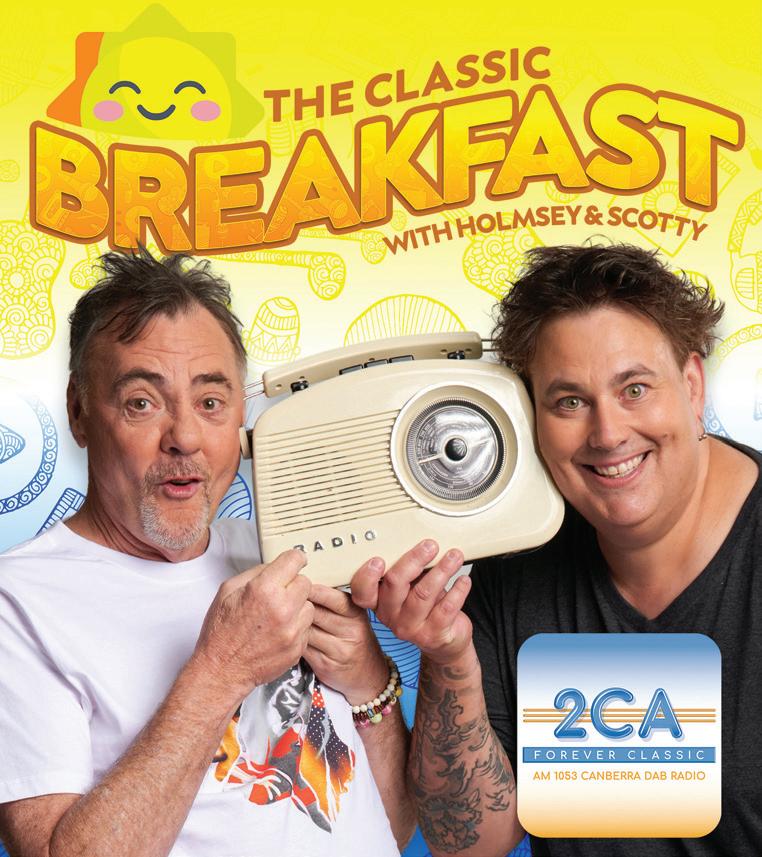
Noel Pearson patronised Jacinta Nampijinpa Price, describing her opposition as being caught in a “tragic redneck celebrity vortex”. Marcia Langton went one better by associating Price with 19th century Eugenic racism.
The following quote, from Price’s maiden speech in the Senate, lays bare the emptiness of these smears; Price said: “My elders taught me that any child who is conceived in our country holds within them the baby spirit of the creator ancestor from the land”.
In other words, Australian children of all backgrounds belong to this land… they too have Jukurrpa dreaming and they too are connected spiritually to this country. This is what I know true reconciliation to mean. How could anyone, after reading this generous spiritual blessing, believe that the former mayor of Alice Springs considers herself, or anyone else, racially inferior?
We are witnessing a phoney metamorphosis of a far less generous spirituality into a national curative.
The “Uluru Statement from the Heart” boasts a “sacred link”, much like royals do when rationalising
their extra entitlements.
All Australians, whatever their religious beliefs or lack of them, will be expected to dip their hats to contemporary interpretations of indigenous animism.
Peace-loving liberal democracies should strive for neutrality regarding spiritual beliefs.

Nor should they legally box ethnic groups as victims or oppressors. Ignoring the clarion lessons of history, we are going to seat citizens in separate sections of the constitutional bus.
If the Voice gets up, its inevitable fallibility will see it defending itself against accusations of false promise. Casting themselves as scapegoats for continuing indigenous troubles is probably not a scenario prospective Voice candidates had in mind.
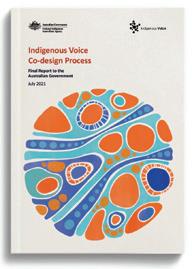

The 1967 referendum was clear and uniting, and enjoyed record support; this one is hazy and divisive. It’s time for Albanese to throw in the towel, and direct political capital away from this toxic trophy. Emotion should inform reason, not suffocate it.
All opinions welcome “CityNews” welcomes all opinions on the Voice. Respectful submissions of up to 750 words to editor@citynews.com.au, please.
“With scant reason behind the Voice, proponents are either bickering; rationalising the fog surrounding its scope, power and selection process; or insulting opponents,” writes reader PETER ROBINSON, of Ainslie.
We are witnessing a phoney metamorphosis of a far less generous spirituality into a national curative.

WHETHER it’s seeing a live show, getting up close to some friendly birds or learning with Lego, there’s plenty of activities to keep the kids engaged and entertained these school holidays.
This week “CityNews” rounds up some of the Canberra region’s best activities that the whole family can enjoy over the school break.
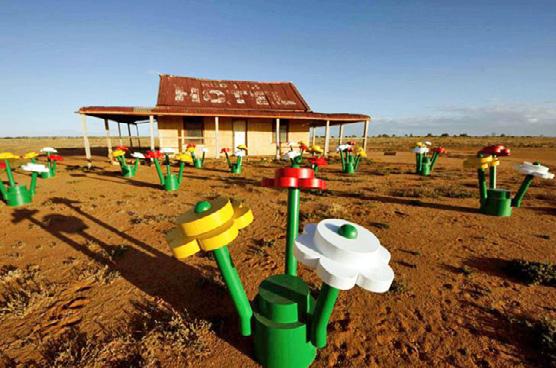
ment back.”

Mike says he and Chris produce and perform because they’re passionate about live performances that actually entertain.
“There’s something special about enjoying live
BRICKS 4 Kidz is a Canberra institution that has entertained thousands of children since it was established in 2017,


“Our holiday workshops are unique: we run full-day programs where children work at a number of different Lego stations to give them variety, which includes motorised Lego Technic and traditional Lego bricks with instructions and bags of free play where they are encouraged to
Mark, is its amazing instructors who love
teaching kids.
“We have a passion for providing a fun and nurturing environment for all of our little builders,” he says, “and it’s screen-free fun.”
And, the workshops are customised to the age of the children and are educational.
“Children will learn basic STEM concepts through the use of motors and gears with our LEGO Technic.”

7+, ‘Showmen’ is set to take Australia by storm.” Showmen – The Ultimate Magic Spectacular, at Canberra Theatre Centre, April 15. Shows at 2pm and 6.45pm. Visit officialshowmen.com


“There’s a lot happening for everyone at Northside, including during school holidays, so keep an eye out,” says community service manager Kate Malone.
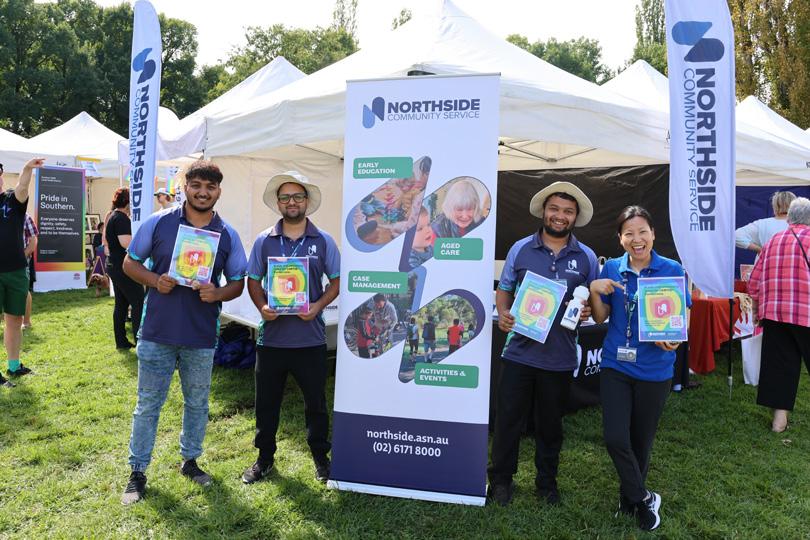
FINDING affordable and fun things to do for young people can be a challenge, says Northside Community Service manager Kate Malone.
“Which is why Northside Community Service is providing two new weekly activities and events for 12-25-year-olds during school terms,” she says.
“Our Dickson drop-in runs from 2.30pm to 5pm every Tuesday and Wednesday at the Majura Community Centre.
“With free wifi, snacks and drinks, board games, badge making and more, it’s a safe place for young people to hang out with their friends after school.
“Youth workers will also be around if anyone needs some extra support, or just a chat.”
Kate says they are a non-judgemental and supportive
place to ask for help.
“Every Friday from 3pm to 4pm – except public holidays – young people can drop in to our tennis club at the courts opposite the Majura Community Centre,” she says.
“Twelve to 25-year-olds can drop in and serve up a storm – racquets and balls are supplied.
“Northside is a safe and inclusive space for all, so drop in and connect with us and other young people in the community. There’s a lot happening for everyone at Northside, including during school holidays, so keep an eye out.”

Northside Community Service, 2 Rosevear Place, Dickson. Call 6171 8000, or visit northside.asn.au


STARDUST Circus is 30 years old, and has a variety of acts suitable for all ages to kick off the school holidays, says owner Jan Lennon.

array of talent and fun, all under one big top,” she says.
dog, goat, pony and comedy acts, there is definitely no dull moment.”
grandkids, 16 family members are in the show.
sixth-generation performers, we have entertainment in our blood and know exactly how to put on a show,” she says. incredible program, and it’s grown a lot in 30 years.”
2 and the Gungahlin season will run through school holidays perfectly, says Jan.
the Easter period, from April 6 to 23,” she says.
perform from April 27 to May 14.”
our word for it, come and experience it yourself.”
Stardust Circus. Call 0418 247287, or visit stardustcircus.com.au
“It’s a great family show, a really incredible program, and it’s grown a lot in 30 years,” says owner Jan Lennon.
PARROTS, finches, doves and quail are among the birds ready to interact at the Canberra Walk-in Aviary, says owner and manager Mick Logan.
The aviary is great fun for all ages. Now is the best time to get up close and personal with a range of friendly, free-flying birds, he says.
“While not all birds will interact with you, visitors get the chance to observe, up close, species of birds that otherwise would be hard to see in the wild,” Mick says.
“We provide a small plate of food and a tub of mealworms and you can wander around and feed the birds.

“Provided the weather is fine, you can have a great time feeding the birds, taking photos or just observing

our feathered friends.”
The aviary is a 1000sqm planted walk-in enclosure that has more than 500 birds from about 65 different species from Australia and the world, Mick says.
Gold Creek Village has three other attractions, as well as cafes, gift shops and a garden centre, so it’s a great place for a day out after visiting the aviary.
The aviary is open every day, until the end of April, 10am-5pm, with last admissions at 4.30pm.
Canberra Walk-in Aviary, unit 13, Federation Square, O’Hanlon Place, Nicholls. Call 6230 2044 or visit canberrawalkinaviary.com.au
Prices from $30 Child & $40 Adult
Prices from $30 Child & $40 Adult
SHOW TIMES Thurs
ENQUIRIES PHONE 0418 CIRCUS (247287) OR 0428 CIRCUS (247 287)
ENQUIRIES PHONE 0418 CIRCUS (247287) OR 0428 CIRCUS (247 287)

BOOKINGS www.stardustcircus.com.au
BOOKINGS www.stardustcircus.com.au
Gungahlin April 6 to April 23
Gungahlin April 6 to April 23
Queanbeyan April 27 to May 14
Queanbeyan April 27 to May 14
Come along and see the friendly free-flying birds that can be photographed and fed. Walk amongst more than 500 birds from 50 species from Australia and around the world! FREE
BOOK VIA OUR 'BOOK NOW' BUTTON ON canberrawalkinaviary.com.au
(Online bookings preferred but not essential)
Open 7 days a week 10am to 5pm with the last admission at 4.30pm Social distancing rules encouraged
FOR KIDS
UNDER 4
When accompanied by a full paying adult
COME ALONG & VISIT THE WALK-IN AVIARY & THEN ENJOY THE GOLD CREEK VARIETY SHOPS & ATTRACTIONS Unit 13
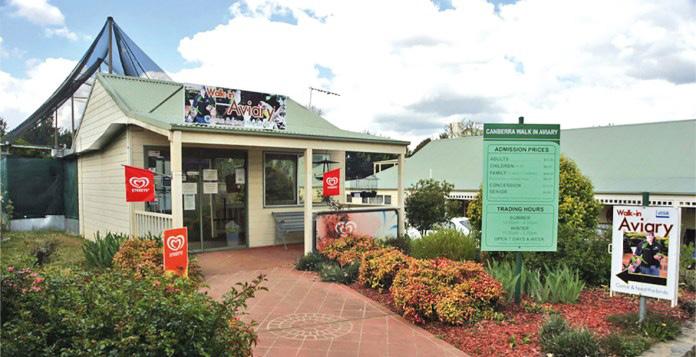
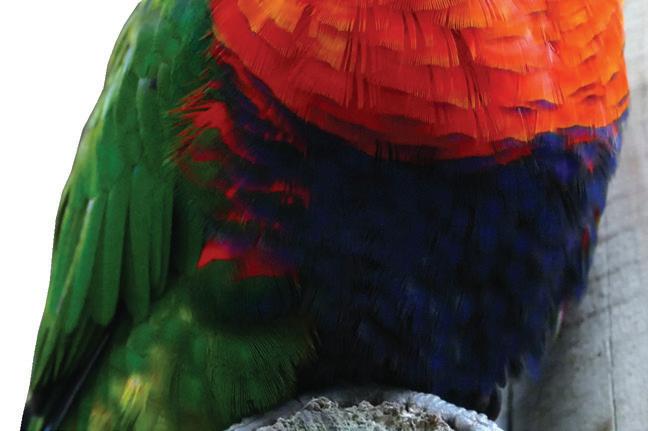
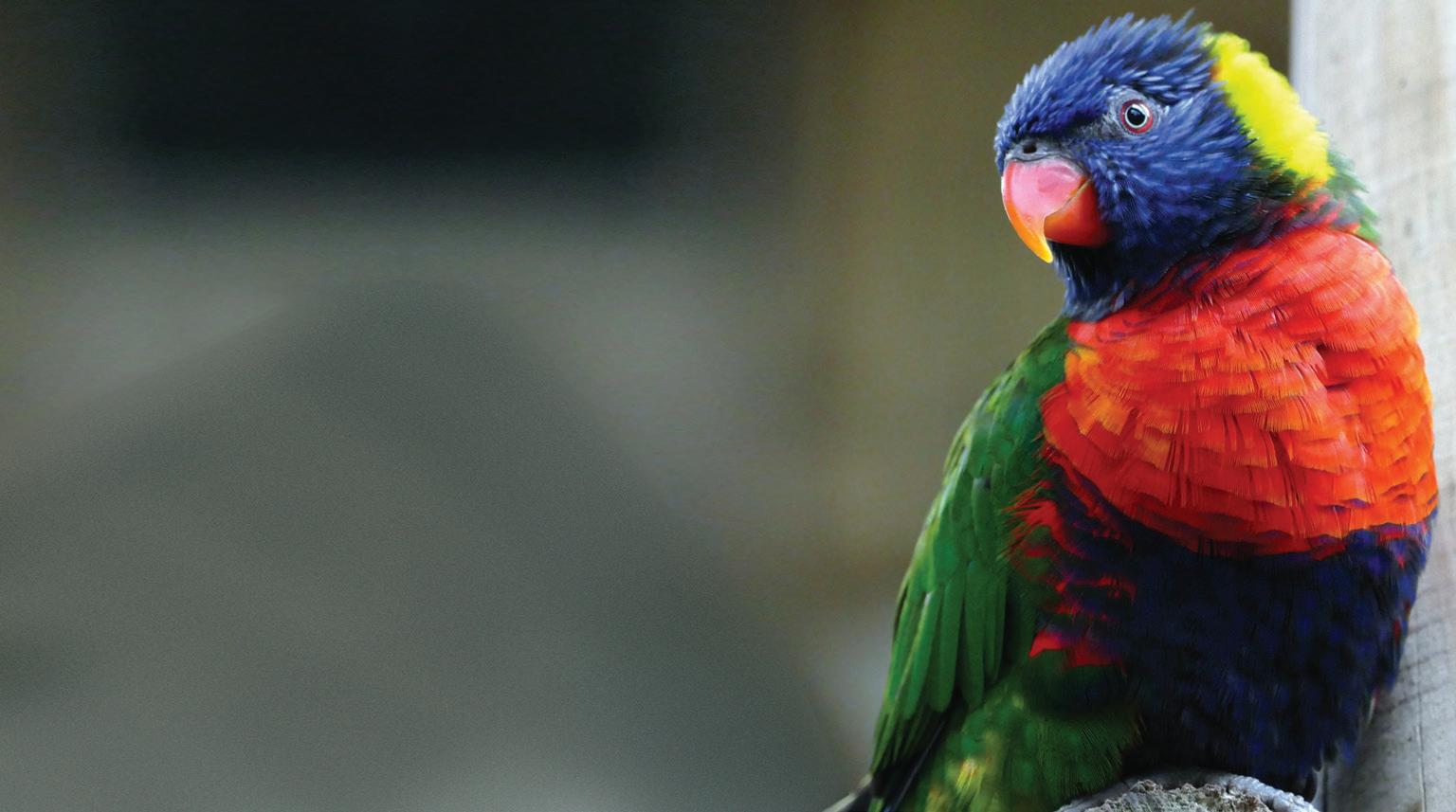
TUGGERANONG Arts Centre is running three school-holiday programs that will give children a chance to show off their creativity, says CEO Caroline Downer.

“Art and action will be in the first week of the school holidays, on April 13 and 14, offering day programs in art, dance and drama,” she says.
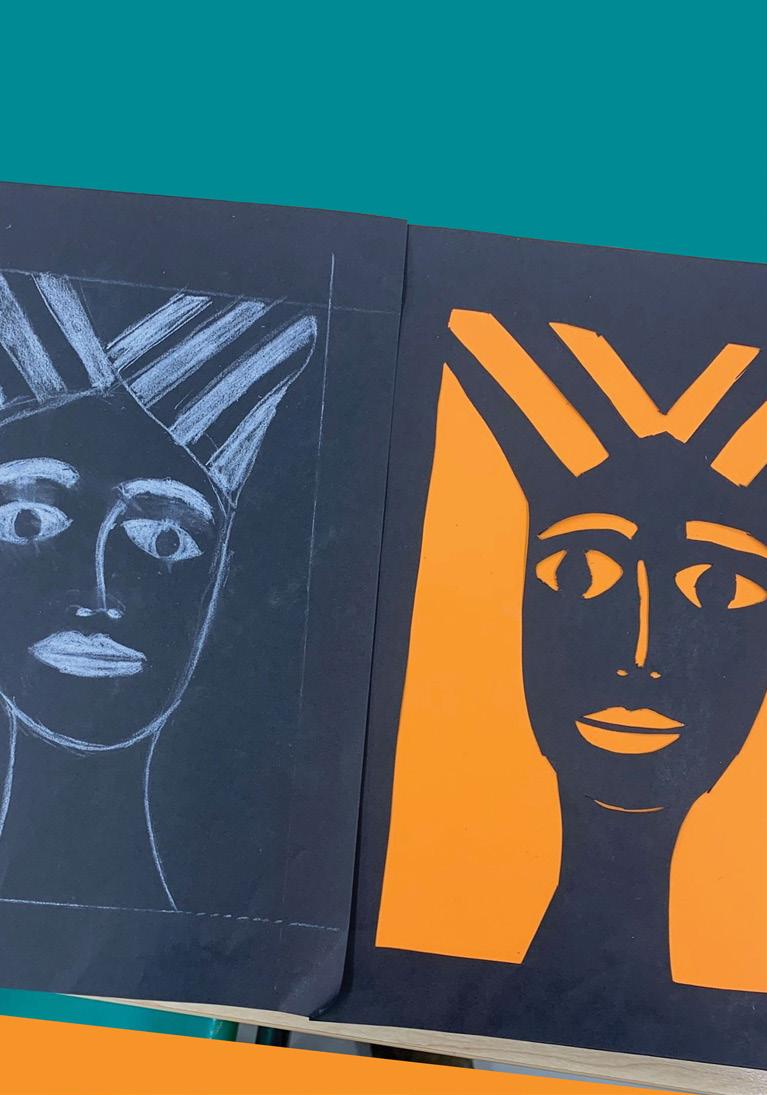
“It gives the opportunity for trialling paint ing, hip hop and drama in a fun environment where the kids can learn at the same time.

“There’s a littlies group for kids between the ages of six and eight, or a primary group for nine to 12 year olds.”
In the second week of school holidays, the ANU School of Music will run a hip hop song-writing workshop.
“It’s happening on April 18 with Daniel Kirkland,” says Caroline.
“It’s a way for the kids to show off their own voice. They will be given techniques, tools and production skills to present their final piece.”

On April 20, kids and teens are invited to paint a lake-facing wall with mural artist Karri McPherson.
“Karri uses vibrant colours, patterns and shapes to bring new life to spaces,” says Caroline.
“She can always bring a smile through her murals, and it will be a very positive experience.
“Come down and have fun transforming the wall into colourful artwork.”
Tuggeranong Arts Centre, 137 Reed Street, Greenway. Call 6293 1443 or visit tuggeranongarts.com/events/art-action-schoolholiday-program/
LOLLY Swagman has been exploring new tastes for nearly three decades, says owner Ian Richardson.
Located in the heart of the Southern Highlands, the lolly shop stocks all-time favorite treats and the latest-trending tastes from around the world.
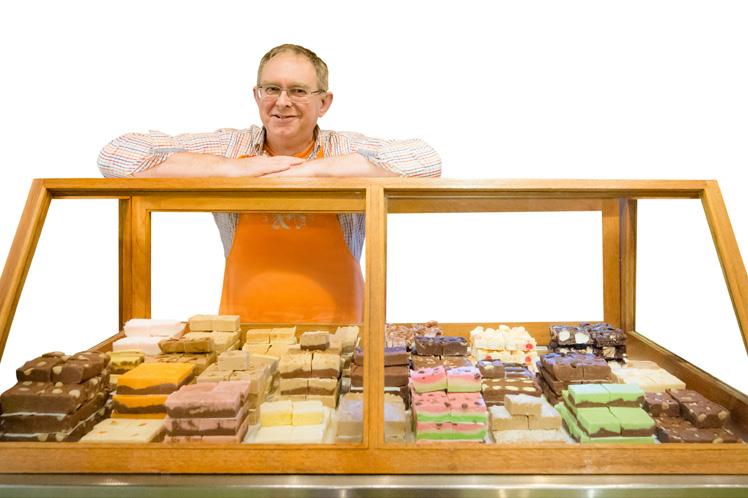
“We’ve got American Reese’s, Hershey’s and candy corn, English bon bons and chocolates, sours and super sours, Dutch liquorice, Scottish tablet and our own Mrs Swag’s Fudge,” says Ian.
“We lost count at 1300 different treats and we know it’s more that that.”
Ian says the store is a common stop on people’s
trips to Berrima.
“It’s a happy place with kids excitedly exploring for new tastes, older people reminiscing and sharing in the thrill of finding a favorite and the great stories that go with them,” he says.
“We often see people who’d come as children now bringing in their own children and sharing their experiences, which is lovely to be allowed to join in on. It’s nice to have that history.”
Lolly Swagman, 11 Old Hume Highway, Berrima. Call 4877 1137, or visit lollyswagman.com.au
Ashlinn Reid, there are years of hospitality experience backing Stella’s By The Lake.

David and Ashlinn say Stella’s provides a friendly and warm cafe experience where everyone is welcome.
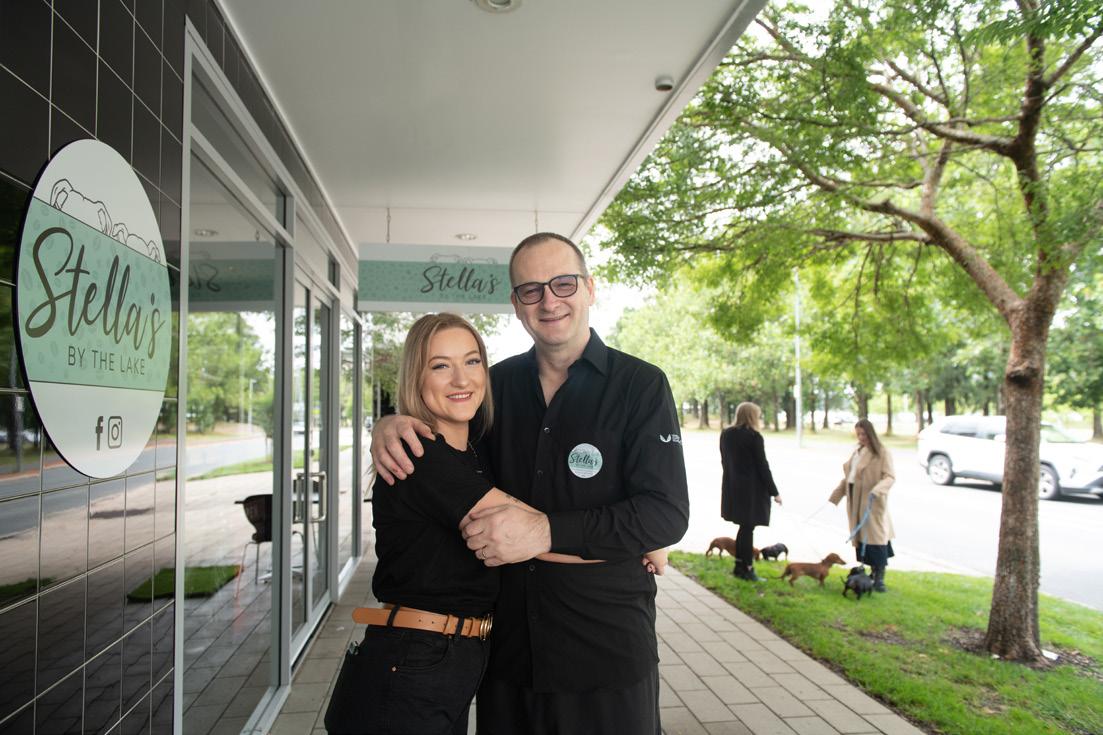
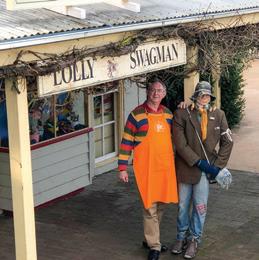
The cafe in Belconnen is offering $9.50 kids’ menu pancakes throughout the school holidays, says Ashlinn.


“We’re dog friendly, and we have a lovely, nice grass space across from Lake Ginninderra for kids to play on,” she says.
“We also offer kids milkshakes and juices, baby chinos and a variety of cakes and ice creams.”

David says Stella’s focus is on simple but good food, and creating a relaxed and happy atmosphere.
shoppers, families, office workers and, of course, lake walkers who enjoy the all-day breakfast and lunch menu options, coffee and drinks that also include alcoholic beverages and sweet treats.”


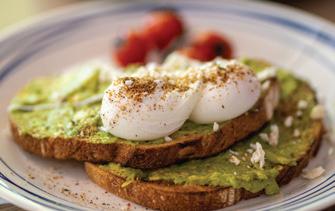
Over the Easter holidays, Stella’s will have some changes to opening hours.
“We will be closed on Good Friday and Easter Monday,” says Ashlinn.
“But, on Easter Saturday and Monday the cafe and kitchen will be open from 8am until 2pm.”
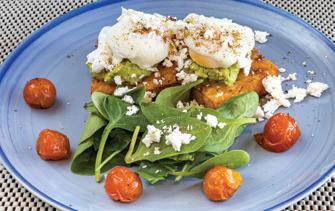
Stella’s By The Lake, 63/1 Beissel Street, Belconnen. Call 6253 0370.

LIVING with a disability, or recovering from an injury, can be a challenge.
There are many passionate experts based in the ACT region who offer services that can make daily life a little easier, whether it’s at home, or beyond.

“CityNews” has found the Canberra businesses who are here to offer support and guidance.
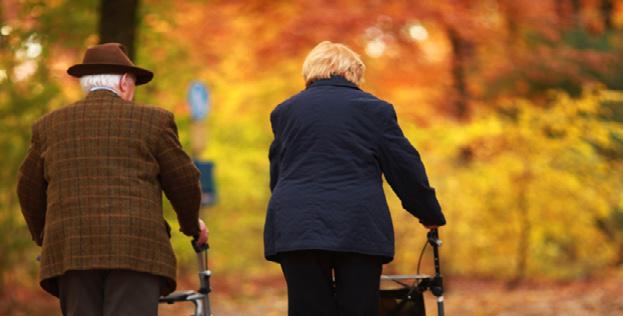
ARTHRITIS ACT can help people with physical and mental disabilities find the pathways they need to lead happier and healthier lives, says CEO Rebecca Davey.
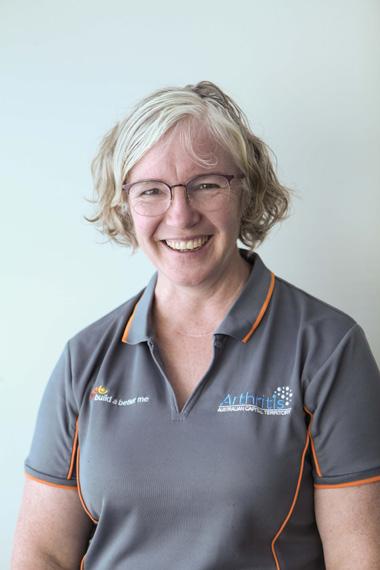
“We have an occupational therapist who can assist people particularly with their assistive technology needs,” says Rebecca.
“That includes wheelchairs, scooters, home modification and he can also do driving assessments for people with disabilities who need them.”
Rebecca says it’s incredibly rewarding to see the difference Arthritis ACT’s services make in the day-to-day lives of those who require them.
Their art therapy program, for example, makes a big difference to people who do it, she says.
“[Throughout the therapy] our fully trained therapists help individu als find and understand their triggers, so that they can be targeted with practical treatments,” she says.
And Rebecca says Arthritis ACT helps people access important services such as the NDIS and the disability support pension.
“These kinds of services make such a big
“We want to provide them the support they need so they can participate fully in the community. ”
Arthritis ACT, 170 Haydon Drive, Bruce. Call 1800 011041, or visit arthritisact.org.au
CAPITAL Rehabilitation Supplies aims to make the day-to-day lives of seniors and people living with disabilities easier and more comfortable, says manager and owner Tim Robinson.
“We have a range of products available for purchase or hire that can help anyone with their needs,” says Tim.
“Just some of these products include electric lift chairs, height-adjustable chairs, pressure care cushions and mattresses, electric hospital beds and home care beds, mobility aids such as walkers, wheelchairs, rollators, crutches and walking sticks.”
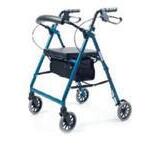

A family owned business with more than 40
Capital Rehabilitation Supplies understands every individual has their own needs.

“We know that some of these issues are sensitive, and can be uncomfortable to deal with, so we try to be as delicate and helpful as possible. If we do not stock a certain item we will always do everything in our power to locate the product,” he says.
“We pride ourselves on our patience and helpful attitude. People can come and discuss what they require with us and we can find what works for them.”
Capital Rehabilitation Supplies, 3/66 Heffernan Street, Mitchell. Call 6174 4813 or visit

• Electric Lift recliner chairs. Scooters, Walkers and mobility products.



• Tracheostomy supplies
•
We assist you with:
Planning and design of custom builds or modification to your home
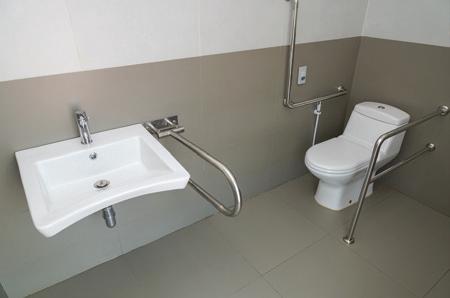
Workplace modifications to make working easier, efficient and less painful
Car modifications and driving assessments - if you have been told you need this

Applications to the NDIS and other schemes e.g Housing and Disability Support Pensions
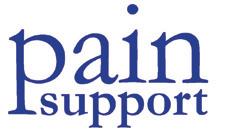
We work closely with our team of physiotherapists, exercise physiologists, art therapy and dietetics at Build a Better Me: Arthritis, Pain Support & ME/CFS ACT to provide you with the best support possible!
You do not need to have any particular condition to utilise our services, just a desire to ‘Build a Better You.
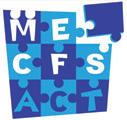

“WITH a tailor-made Acorn Stairlift you can stay right where you are... keep your home, keep your freedom and retain your independence,” says general manager Simon Hughes.
“At Acorn Stairlifts we want to make sure that you get the perfect stairlift solution for your needs,” he says.
“Your home is a cherished part of your life: a place to welcome your family and friends, to entertain, enjoy and simply relax.
“So, why let getting up and down your stairs stop you from having a fully independent lifestyle?”
Acorn Stairlifts is the first stairlift manufacturer to be awarded an “ease of use” commendation from
the Arthritis Foundation, which Simon says speaks for itself.
“And we can install in most cases within a matter of days rather than weeks,” he says.
“A visit from one of our friendly surveyors will allow you to see what sets Acorn Stairlifts apart from any other stairlift company.
“After assessing your needs, our surveyor will instantly be able to give you the peace of mind of knowing exactly how affordable an Acorn Stairlift can be.”
Acorn Stairlifts. Call 1800 561 546 or visit acornstairlifts.com.au
with tangible support services to help with day-to-day workloads.”
Lisa says the first people you are likely to talk to at Carers ACT are care planners.
“Our team of care planners have a deep understanding of what it’s like to be a carer, because many of our care planners have taken on a caring role themselves,” she says.
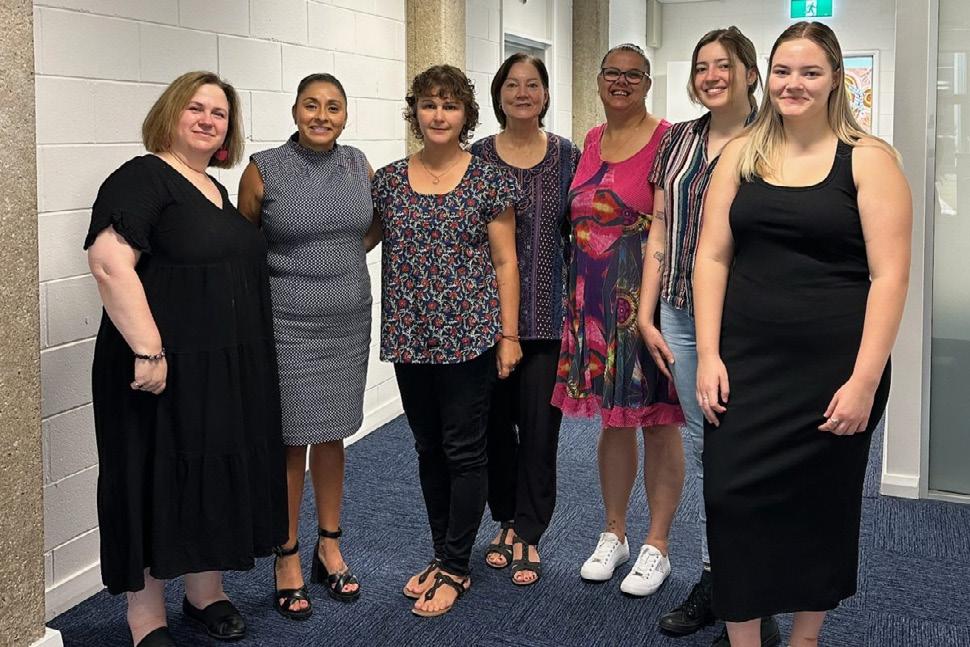
needs change over time.
“Working with a care planner is a flexible, unique process, directed by your needs and outcomes, but whatever that looks like, we are in your corner.”
Carers ACT, 2/80 Beaurepaire Crescent, Holt. Call the Carer Gateway Team on 1800 422737, or visit carersact.org.au
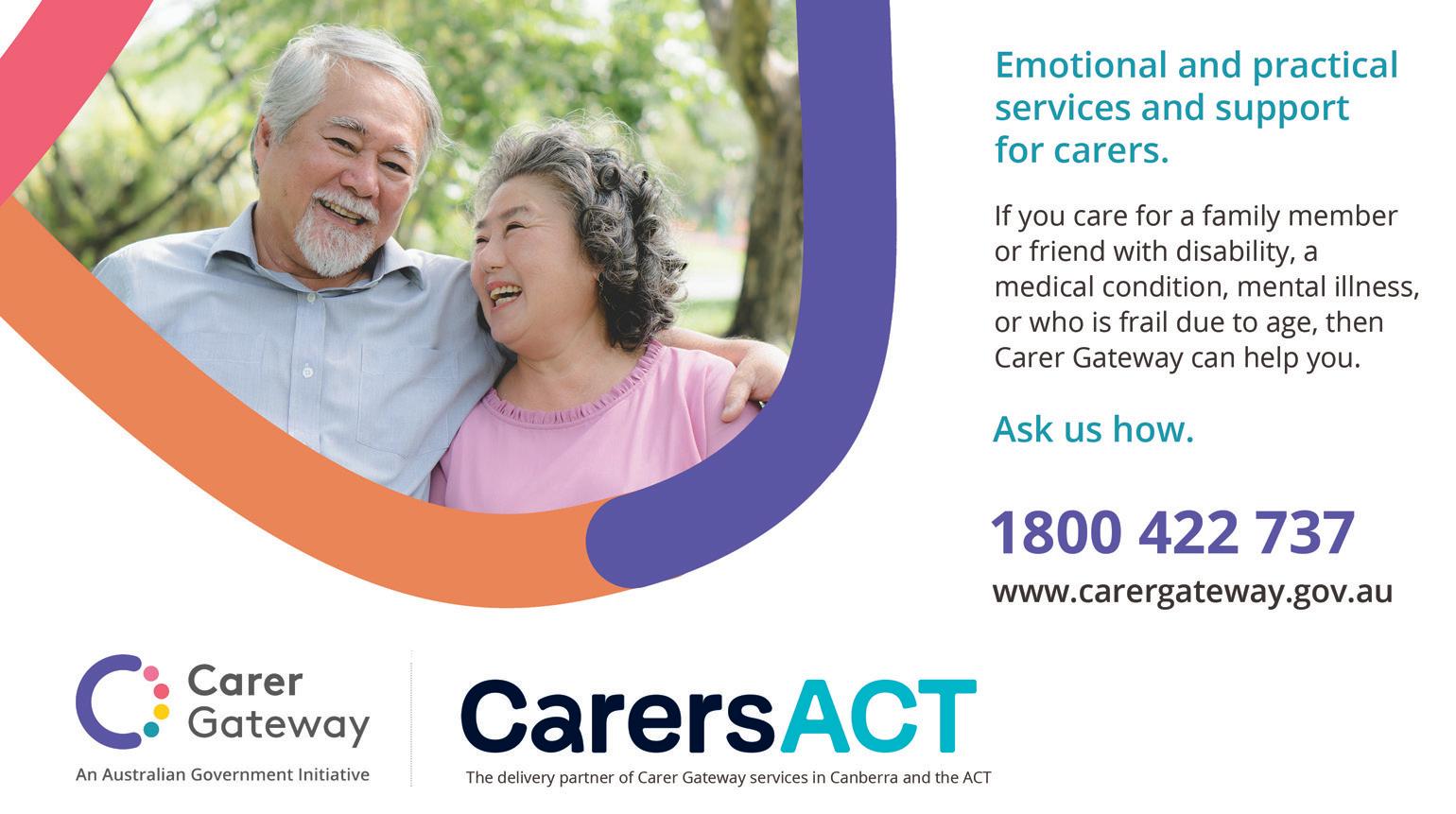
to participants, says director Steph Ho.
“We provide a whole range of services from in-home support – including offering moral support – to community support, transport and respite at locations across Canberra, Batemans Bay and at our regional property in Victoria,” says Steph.
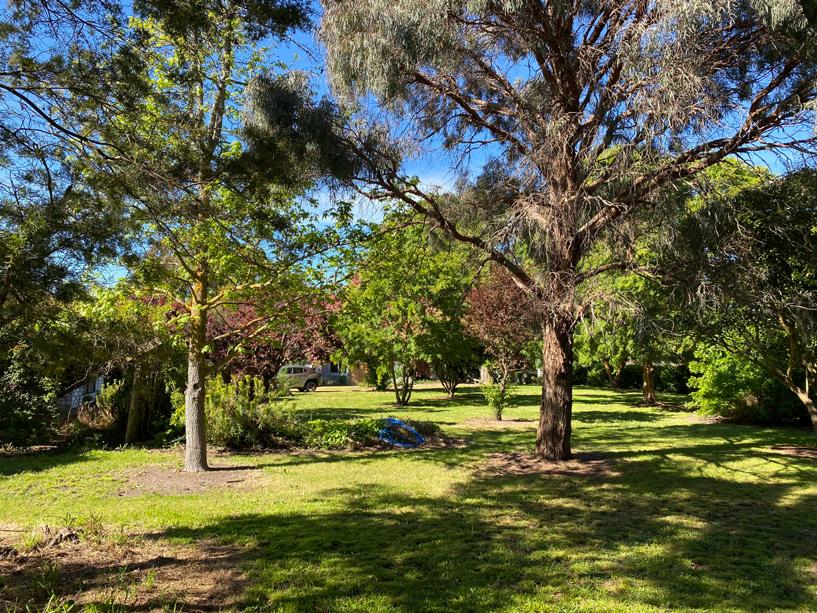
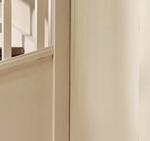

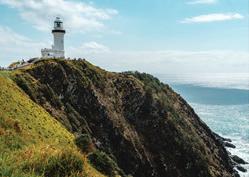
“We take pride in being a disability support provider that truly cares for the wellbeing and progress of their clients.

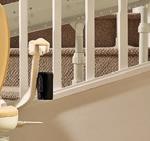


“We provide a completely personalised approach, and take each individual’s needs into account to tailor their care plan and match with the most suitable support worker.”
Steph says Jabez Care also offers aged-care support

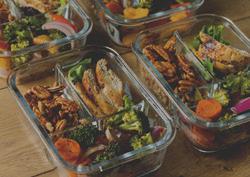
emergency support and we provide participating family and guardians with support,” she says.
“We also tailor experiences for participants, such as roadtrips, concerts, snow trips, karaoke and mountain biking.
“We have built up a great reputation amongst participants, their families and support provider partners so they have trust and confidence in Jabez Care.”

Steph says Jabez Care does the work they do because they want to make a difference in the lives of their participants.
Jabez Disability Care, 60/7 State Circle, Forrest. Call 0408 780740 or visit jabezcare.com.au



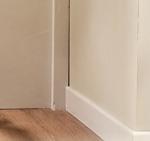


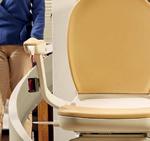
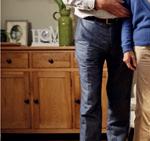






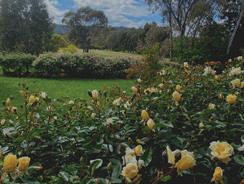
PINEAPPLES, being tropical plants, struggle with our frosts and cold winters outdoors, but anything is possible with a glasshouse, or as an indoor plant with warmth and a lot of loving care.
Pineapples ( Ananas Comosus) have long been a favourite in Australia and were planted as far back as 1838 in Queensland, where the heritage-listed Queens Gardens currently stand in the centre of Brisbane.
Pineapples are terrestrial bromeliads and need a lot of sun and humidity to get them growing in our region. They grow well in pots and if the temperature stays above 10C their growth will continue.
It may take a season or two to fruit, but the wait will be worth it and a bit of fun along the way. If the pineapple is getting too big for the pot, remove any suckers to encourage the main plant to fruit. Pineapples need a lot of water but dislike wet feet, so the drainage needs to be perfect
to get them growing as indoor plants. The first signs of fruit being ripe is that it turns from green to yellow and the fragrance will be a good indication that it is ready for picking.
To propagate your own pineapple is as easy as buying a pineapple from a vegetable stall at the local markets and choosing one that has green, healthy, strong leaves.
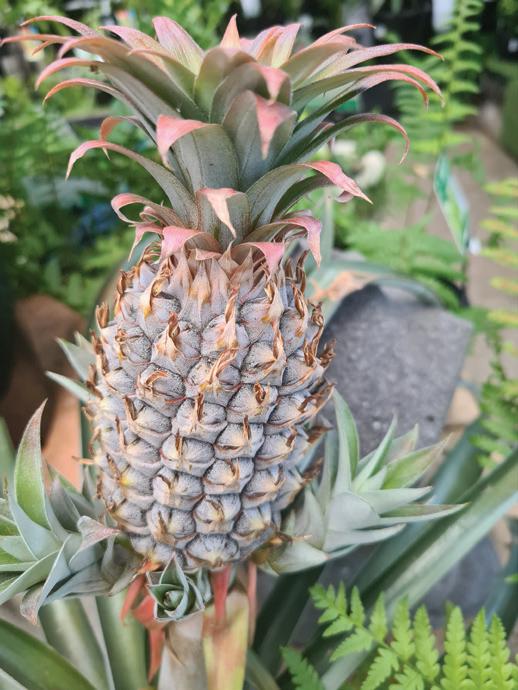
Cut off the top with a sharp knife leaving at least two to three centimetres of flesh on the cutting. Peel back a third of the leaves and flesh at the base of the leaves to reveal the core. Leave it to dry in indirect sunlight for a few days to allow the core to callous over and dry out. Once it has dried, place the crown in a jar of clean water to the depth of the leaf-free area and change the water every few days. After a few weeks, roots will form and when there are a good number of them, place them into a potting mix. Feed with a liquid slow-release fertiliser every month or so.
SEDUM Autumn Joy (Hylotelephium spectabile) is a succulent plant with broccoli-like heads and a mass of upright, pink flowers. It blooms from summer to late autumn.

Once the weather cools and the frosts begin, the flowers will still hold their shape and undergo a radiant change as the season
progresses. It’s terrific for planting in a dry spot in full sun. It will grow in poor soil, but should be watered until established.
In the dead of winter, cut them to the ground and they will emerge in spring. If the clump is growing too big and growing out of the soil, dig it up and divide with a sharp spade and replant.

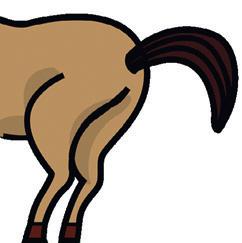
MARCH is a busy time in the garden and the last chance to get winter vegetables growing. Green manure crops can go in by sprinkling green manure seeds on to weed-free moist soil and raked and watered in lightly. Keep the water up to the crop throughout winter and when about 10 per cent of flowers emerge in late winter to early spring, chop into the soil to prepare for planting in October when the soil has warmed.
jackwar@home.netspeed.com.au



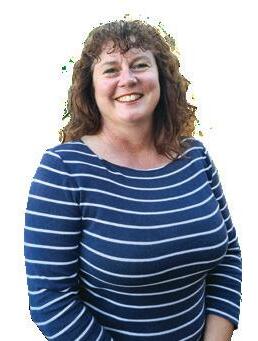



• Fertilise camellias and winter-flowers shrubs.


• Prune extra growth of edible grapevines.
• Plant winter salads such as corn salad, miners lettuce and coriander.
• Fertilise and deadhead roses.

On the contrary, in the next few weeks he’ll be headlining the Canberra Legacy Variety Concert with a show he’s written, performing with Shortis and Simpson on the opening night at the National Folk Festival, jointly directing the festival choir with Simpson in a show called “From Georgia [Stalin’s birthplace] to ‘Georgy Girl’,” then appearing with the Royal Military College Band in “Music at Midday” on April 11.
I caught up recently with Potger at the home in Braidwood, which he shares with artist-photographer Elizabeth Hawkes, to find out how he does it.
“I don’t stay idle, I’m still writing songs and still recording them,” Potger says. “It keeps me off the streets.”
But these days his focus is on giving back to the community via charitable work and indeed, he says, it was he who initiated his involvement with the Legacy concert, the proceeds of which will go to supporting the widows, widowers and families of
Australia’s Defence veterans.
One might imagine Potger to be a high-living Melburnian or Sydneysider, and so he was for a time, but he’s been living in Braidwood since around 2014, describing the move as “a wonderful decision which felt completely natural”.
He says he’s been able to engage with the local community in Braidwood, especially “with the fantastic National Theatre right across the road… Elizabeth and I started promoting concerts there, and now we think of ourselves as small-town impresarios.”

He even flirted with politics in 2021 for what he described as “about three and a half seconds,” putting up his hand to run for Queanbeyan-Palerang Regional Council, but he was ruled out because of a “faulty” nomination process.
As for the Legacy concert, Potger had always wanted to perform with an army band, so rang his old mate Barry Morrison, formerly of the band Xanadu, asking for a contact. Easy. Morrison said he’d been to school in Bundaberg with army band conductor (and “CityNews” music reviewer) Ian McLean and pointed him in the right direction.
McLean, who is both producer and MC for the Legacy concert, jumped at the idea and also put Potger in touch with Major Matt O’Keeffe, director of the RMC band, who signed him up for the midday concert
on April 11.
According to Potger, both interactions proved “very agreeable”.
Besides, he’d already prepared a program called “Celebrating The Seekers”, which he could do either with a band or as a solo performance and was looking ahead to a NSW solo tour where he would perform in towns from Warren to Woy Woy (Spike Milligan is one of his heroes).
In “Celebrating The Seekers” he’ll talk a lot and perform his own versions of favourite Seekers’ songs, including “I’ll Never Find Another You” and the aforementioned “Georgy Girl”.
“I tell anecdotes about six decades in the music industry,” he says.
The six decades started when he was aged 16 in year 11 at Melbourne High School, where he formed his first trio, which by year 12 became a quartet.
“But The Seekers as we know them began in December 1962, when I was just 21… they’ve been such a massive part of my life.”
Already a master of the 12-string guitar, it was Potger who composed the riffs that became a trademark of the Seekers’ charttopping recordings and he has continued life as a composer down the years.
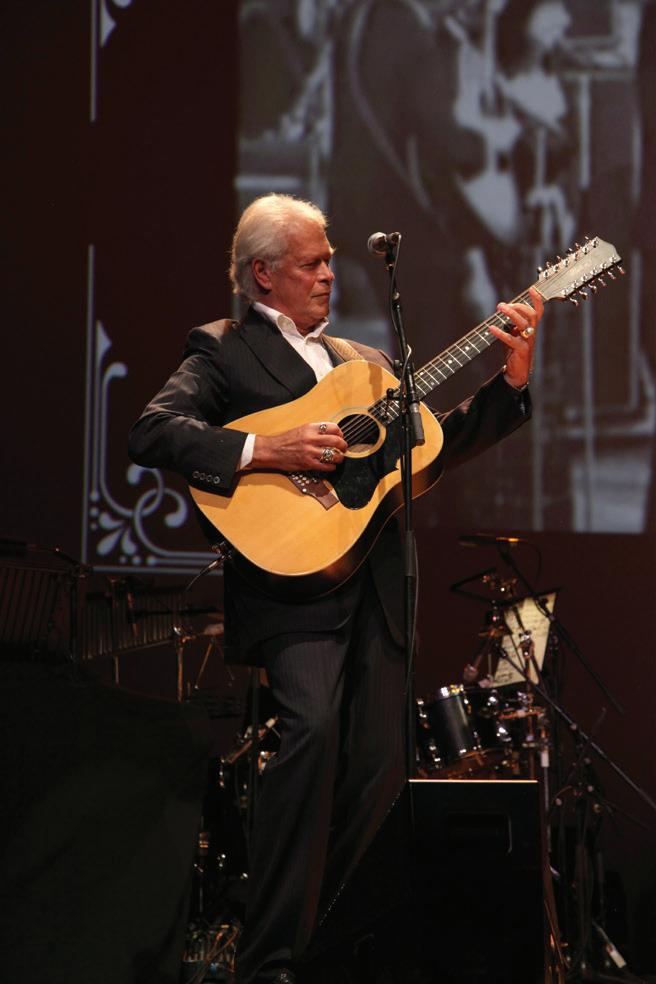
After sailing for the UK in 1964 and enjoying an international career, The Seekers were named Australians of the Year in 1967, disbanded in 1968, reunited
in 1992 to tour internationally for their Silver Jubilee, reunited again in 2013-14 for UK and Australian Golden Anniversary tours and appeared again in support of the “Georgy Girl” musical in 2014.
“Judith [Durham] is gone but Athol [Guy] and Bruce [Woodley] still live in Victoria and we keep in touch,” he says.


So, does their music resonate with a younger generation of music lovers?
“It depends on whether they heard it at home,” he says.
“So many young people write to me and say they’ve listened to the records that their parents loved.”
The Legacy show is determinedly aimed at the wider general public. He’ll be joined by an acoustic group from the Royal Military College Band, the Sing Australia Choir, Canberra artists, including jazz vocal ist Leisa Keen, cellist Charlotte Winslade, bush poet Laurie McDonald and pianist Sam Row, who will play “The Swan” from “Carnival of the Animals” and the Chopin showstopper, “Polonaise Brillante”.
The show will conclude with the entire cast singing a medley of songs, natu rally concluding with The Seekers’ classics “Morningtown Ride” and “The Carnival is Over”.
Canberra Legacy Variety Concert, Royal Theatre, National Convention Centre, 2 pm, Saturday, April 1. Bookings at Ticketek.


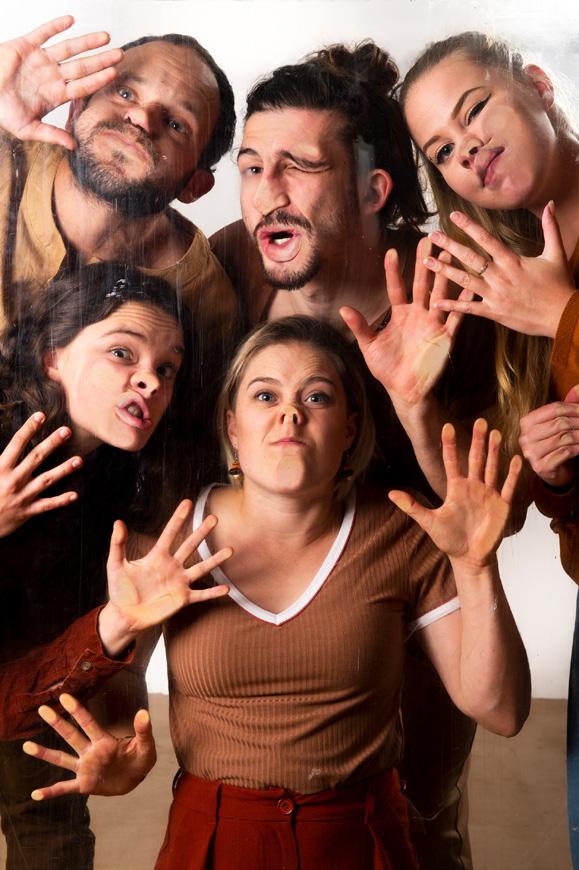




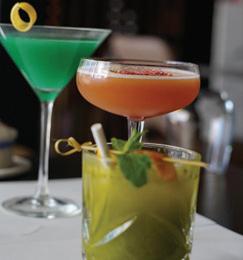











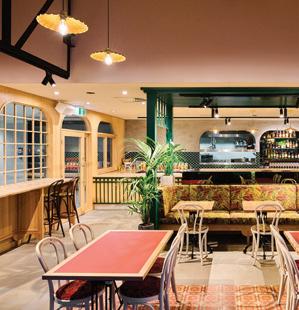







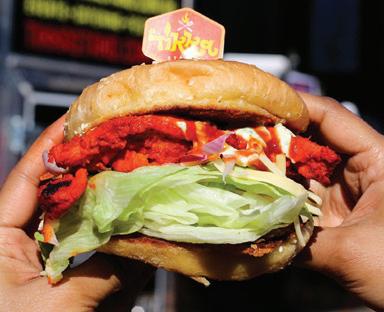
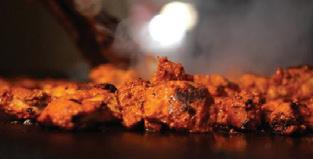


CHEF Adrianne Davos is making her mark at the new Luna Bar in Civic.
Adi’s food is exciting and – to use her own words – she creates elevated street food with complex umami flavours, drawing inspiration from her south-east Asian roots. It’s a perfect package and be prepared for ethical and sustainable cooking that bursts with colour and flavour.
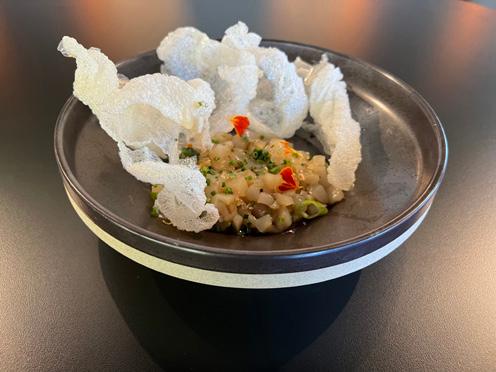

Luna is a newbie and sharply focused on customer service and delighting the palette with share dishes.



We don’t usually drink cocktails at lunch, but Luna’s mixologist Charli Stephenson shakes things up so much we couldn’t resist.
The One Night in Paris, gin with a house-made lavender and Davidson plum syrup, was herbaceous and punchy ($23). The Citrus Valentina, with vodka, lime, house-made lemongrass and kaffir lime leaf syrup, and coconut cream ($19) was exotic. Both were served in delightful cocktail glasses, reminiscent of modern Manhattan. If you like a fiery cocktail, road test the Green Rocket ($21).
Everything from the raw bar was excellent – salmon sashimi ($22), scallop ceviche ($23), steak tartare ($28) – and the presentation
duck, cherry and goat’s cheese ($21 for two pieces) and a fun take on fish and chips – pescado, tartar sauce and a spunky salsa verde ($16 for two pieces).
For a bit of kick, head straight to the cauliflower tacos with sambal, aioli, and yuzu soy caramel ($13 for two pieces).

The miso eggplant with puffed grains was mighty fine and a perfect texture, given this veggie can be tricky to cook at times ($16). The satay roasted cauliflower
commanded our attention and the Major flavour presented with the fried king brown mushrooms, with yuzu soy caramel ($17). Luna comes umami lunacy.
Our least favourite share plate was the prawn and crab roll ($23 for two pieces). It’s a cheeky take on a lobster roll and, while one of our party felt the prawn-head sauce was too strong, that wasn’t my issue with the dish. It was the proportion of bread in the roll versus other ingredients. It was simply a little too bready for my liking. Did we have room for dessert?
“CIRQUE Mother Africa” is back in town with a new 90-minute extravaganza combining contortion, acrobatics, traditional dance, live music, pan spinning and hand balancing from nine African countries including Ethiopia, South Africa, Kenya and Tanzania. Canberra Theatre, Tuesday, March 28.
ENSEMBLE Offspring presents Techno Folk, a trio of clarinet, percussion and piano playing new work from Melbourne’s Joe Chindamo, Karen Tanaka’s “Techno Etudes”, Chick Corea’s “Children’s Songs,” Alice Chance’s “Mirroring” and commissioned works by Samantha Wolf and Nicole Murphy. The Street Theatre, March 29.
JARRAD West’s long-awaited production of “Holding The Man”, adapted by Queanbeyan-born Tommy Murphy from the book by Timothy Conigrave, will open the 2023 season for ACT Hub, Kingston. Until April 1.
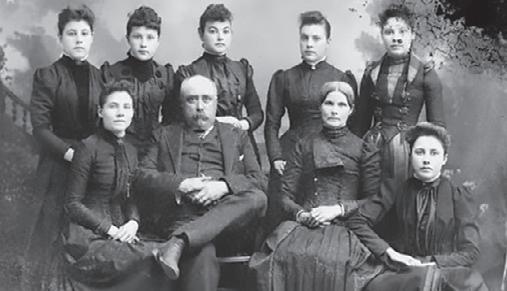
THERE’S a new art gallery in Yass with an interesting name –Tyger, named after William Blake’s famous poem (“Tyger Tyger, burning bright”). Its current exhibition is “Bryter”, a show of 10 artists from the Southern Tablelands and beyond. Tyger has committed to giving at least 50 per cent of its
profits to local charities and is the brainchild of Yass collector Martyn Pearce. Located prominently in the front of the Memorial Hall building on Comur Street, it’s open Friday to Sunday.

FOUR photographic art images by Canberra artist Margaret Kalms have been accepted into ArtExpo New York, March 30-April 2. Kalms has, for some years, been focusing artistically on images of women suffering from endometriosis.

ART Song Canberra’s next concert,
“Touches of Sweet Harmony”, built around the words of Shakespeare, will be given by two former ANU School of Music lecturers – mezzosoprano, Christina Wilson and Alan Hicks on piano. Wesley Music Centre, Forrest, 3pm, April 2.
BRAIDWOOD-based artist John R Walker tells us of a major acquisition by the National Gallery of Australia of his works “Eagle Spirit, Vathiwarta”, 2021, archival oil on polyester canvas and a related “Vathiwarta” Chinese concertina drawing book.
Our Georg Jensen sparkling rose (Tasmania, $65) was glorious and the Dance with the Devil celebrated Margaret River’s skill with chardonnay ($51).
Luna is stylish, spacious and offers multiple seating zones –bench seating (we can vouch for the comfort), tall tables, a lounge area and outdoor benches.
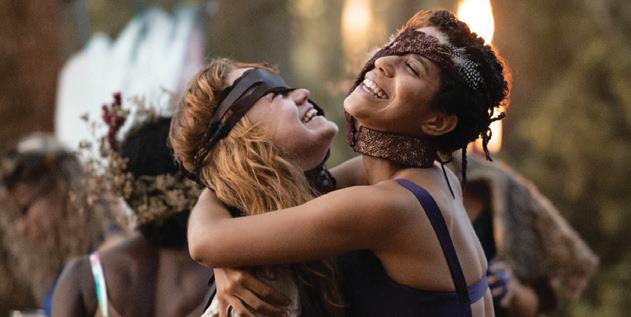 By Nick OVERALL
By Nick OVERALL
THERE’S a deep and morbid fascination with stories of surviving in the wild.
The allure feels almost primal, an obsession with what happens when the thin veneer of civilisation is stripped away and we’re returned to a place of atavism.
Out there, away from the gaze of society, how do humans behave? Are we as good as we would hope or do our survival instincts override the ethics we’ve tenuously built over centuries?
William Golding’s 1954 novel “Lord of the Flies” is perhaps the most famous story to ask these questions.
The book told the frightening tale of a group of schoolboys stranded on an island and their disastrous attempts to govern themselves.
While at first they try to create some form
separate into opposing sides and wage one another in a battle for control of the island… poor Piggy. Fiction? Of course, but Golding’s bleak meditations on human nature may not be so far from reality.
A google of “Robbers Cave” will show a real-life psychological experiment where young boys were put into a “survival-like” setting and quickly turned against one another in a battle for supremacy. The results were so disconcerting the experiment has become
No surprise then that almost seven decades after Golding’s book was first published it continues to exert its influence over contemporary storytellers.
Enter “Yellowjackets”, this week streaming its second season on Paramount Plus.
This gory psychological thriller is TV’s latest wilderness-survival story that’s become a major hit for the still relatively new platform.
It’s not the boys and their barbarism this show is about though. This time it’s the girls who are put under the microscope.
The eponymous “Yellowjackets” are a high-school team of female soccer players who become stranded in the Canadian wilderness after their plane crashes on its journey to a tournament.
How do the girls compare to the boys?
Well viewers of “Yellowjackets” will know it doesn’t take long for them to go feral, either.
The first season of the show split its story into multiple timelines. After a particularly gory intro, the series takes its audience to 25 years after the girls’ fight for survival unfolded.
NZ Melanie Lynksey takes the spotlight as Shauna – a former star soccer player who was on the cusp of greatness before she plummeted into the wild with her teammates.
Now in her forties, she’s haunted by the events that unfolded in the forest, events we eerily don’t yet know about. She’s also terrified of what happened going public after a plucky journalist starts sniffing around for a story.
The supporting cast is recognisable from other streaming hits here and there.
Christina Ricci from Netflix’s “Wednesday” and Sophie Thatcher from Disney Plus’ “The Book of Boba Fett” are to name a few.
They play the adult versions of the teens who crashed in the wild, whereas their younger counterparts are fittingly played by less well known stars.
An eerie absence of adult versions of some of these characters hints at a gruesome demise during their ordeal… or worse.
While this jumping between timelines did a great job in hooking the audience, the constant back and forth did eventually become jarring and slowed down the show’s thrilling pace.
Season two would benefit from focusing on the core story. It’s got more than enough to pad out its 10 new episodes.
Regardless, “Yellowjackets” makes for some gripping telly and puts an intriguing twist on the age-old survival tale. A second season certainly justifies its existence by promising to answer questions and reveal secrets left hanging from the first set of episodes that scored seven Emmy nominations.
Let’s just hope it doesn’t get carried away with its success. I’d hate to see this one end up how “Lost” did.
had “come out of retirement” to play a role, I was astonished.
For Sheldon is from such a famous showbiz family that you’d hardly think the word “retirement” to be in his vocabulary.
The son of Toni Lamond and the nephew of Helen Reddy, with no fewer than 1800 performances in “Priscilla Queen of the Desert: The Musical” behind him, including on the West End and on Broadway, Sheldon is nothing short of showbiz royalty.
But it was true, as I found when I caught up with him by phone to his home in the Blue Mountains.
Years of treading the boards as the transitioned character Bernadette in
version of “Charlie and the Chocolate Factory” had taken their toll.
“I quit the business over three years ago,” he says. “I wasn’t getting any joy out of it any more. I was getting grumpy, I was just unhappy, and I’d been acting since I was seven
Restorations - Repairs - Remakes - Re-Setting Ring Re-sizing - 48hr Service

Custom Design - for something Special Pearl and Bead Re-Threading and Knotting
A Family Business: 55 years experience Southlands Shopping Centre – Mawson
10am to 4pm
Open: Tues, Wed, Thurs, Fri. 0408 310 063

Your Precious ‘Old’ Jewellery - well it used to be... now maybe... It’s just old - and a bit worn out, or costs too much to fix... probably never be worn again... You keep the memories - perhaps, we could buy the goods?
An additional factor was that, while based in New York for eight years doing “Priscilla”, he was aware of his mother’s increasing health issues – she is just about to turn 91.
“I thought, now is the time to be quiet in the Blue Mountains and take care of mum,” he says.
“It’s been wonderful and I fully intend to go straight back to it after this.”
But the play “Choir Boy” beckoned. Penned by Tarell Alvin McCraney, Oscar-winning writer of “Moonlight”, its story is interwoven with a cappella gospel hymns.
Sheldon gets to play the schoolmaster and, as I remind him, the last time he played a schoolmaster was in “Fame” 23 years ago, so he’s got form.
Now he plays Mr Pendleton, described in the casting booklet as “mature, adult, elderly, Caucasian, late sixties to seventies”.
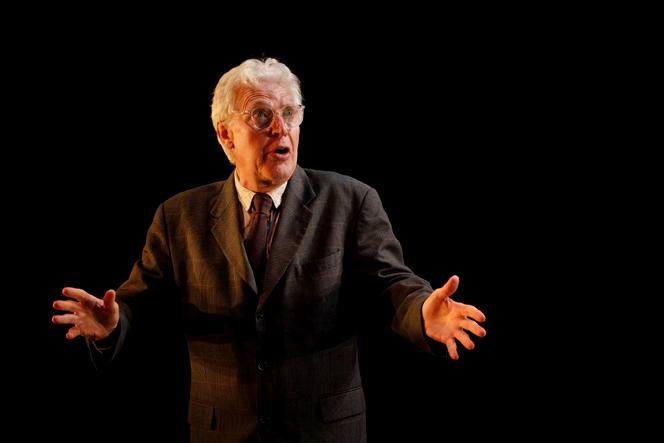
His character, he tells me, teaches at the all-black high school Charles R Drew Prep School for Boys – they’re like military schools and very macho.
Such schools take kids on scholar-
ships, so that the students are diverse – “Different people held together by the music and their faith”.
But competition is the name of the game and as the dramatic focus falls on a young gay man Pharus, the gifted leader of the school’s choir and as they prepare for a fundraising gala, he is taunted with homophobic slurs which almost
Not quite. Enter Sheldon’s
“I’m only in four scenes, but my character is a catalyst,” Sheldon says.
Mr Pendleton is brought out of retirement and comes back to the school where he was once a great supporter of civil rights and, as a white male, an “ally”, but now he teaches a liberal arts course, seeking to raise a conversation with the students about history and society. At one point he sort of takes over the choir, a showbiz joke as, unlike Sheldon, Mr Pendleton is totally unmusical.
The show, co-directed by Zindzi Okenyo and Dino Dimitriadis, is full of exciting movement and “choral-ography”.
But the most excitement is in the performances by the choir members, played by Darron Hayes (who also played Pharus in the US), Zarif, Gareth Dutlow, Abu Kebe, Tawanda Muzenda, Quinton Rofail Rich and Theo Williams – all glorious singers, Sheldon says.

“They’re fantastic kids, a lot making their professional debut. It’s wonderful that there are these kids of colour in this country who are trained,” he says.
“It’s as if we’ve turned a corner in this country. It’s a good news story and it’s important to me that I’m a part of it.”
“Choir Boy,” The Playhouse, March 29-April 2.

“Yellowjackets”... it doesn’t take long for the girls to go feral.
WHEN I read that Tony Sheldon, one of the stars of the coming show “Choir Boy”,
27 March-2 April, 2023
ARIES (Mar 21 – Apr 20)
Mercury and Jupiter join up in your sign; Venus and Uranus unite in your selfesteem zone; and Mars trines Saturn. So it’s time to be publicly confident about your capabilities – and fiercely protective of your privacy. If you don’t love yourself and respect your talents, then why should anyone else? So your motto is from birthday great, Aries singer and actress Lady Gaga: “Don’t you ever let a soul in the world tell you that you can’t be exactly who you are.”
TAURUS (Apr 21 – May 21)
Are you stubbornly holding onto outdated ideas? Are you sticking to obsolete ways of thinking as if you’re on autopilot? This week the planets encourage you to let go of an old grudge, put aside pre-conceived notions, and examine current circumstances in a progressive, philosophical new light. So your motto for the moment is from Aries writer and activist Maya Angelou: “If you don’t like something, change it. If you can’t change it, change your attitude.”
GEMINI (May 22 – June 21)
The planets precipitate a romantic or friendship shake-up, as you reassess your relationship priorities. But, under the influence of impulsive Mars, you could blow your budget with a spontaneous spending spree. Or commit yourself to an ambitious project that you really don’t have the energy or enthusiasm for. So think things through before you make promises! You’ll find short-term big talk is no good if it doesn’t translate into long-term dynamic action.
CANCER (June 22 – July 23)
Proactive Mars is charging through your sign, which provides the drive and passion to start steering your life in a more autonomous direction. It’s also time to stop blaming other people for current problems. Put on your Big Girl (or Big Boy) pants and accept responsibility for the choices you make. Be inspired by birthday writer and adventurer Giacomo Casanova: “Whatever I have done in the course of my life … has been done freely; I am a free agent.”
LEO (July 24 – Aug 23)
Tuesday’s Mercury/Jupiter conjunction encourages you to transform your life by broadening and deepening your horizons … physically, mentally and spiritually. It’s also time to expand your circle of influence and make some positive (and possibly radical) changes, especially at work. Stay alert so you can capitalise on any lucky opportunities that come your way. But be careful you don’t upset someone by making an impulsive, insensitive remark.
VIRGO (Aug 24 – Sept 23)
Taskmaster Saturn is transiting slowly through your love zone for the first time since 1996. So you are in for some romantic hiccups and partnership challenges. But your first priority is to love and value yourself – then satisfying relationships will follow. As singer/actress (and birthday great) Pearl Bailey reminds us: “You cannot belong to anyone else until you belong to yourself.” Tuesday favours teaching, study, research and philosophical discussions.
LIBRA (Sept 24 – Oct 23)
When it comes to close relationships, appearances and natural talents, don’t get hung up on an obsession with perfection. This week Jupiter encourages you to accept people as they are and appreciate the positives in your life. Plus, Uranus urges (and dares) you to shake things up and be who you really are, mistakes and all. Be inspired by singer and actress Lady Gaga (who turns 37 on Tuesday): “I am not perfect; I just think that imperfections are beautiful.”
SCORPIO (Oct 24 – Nov 22)
Proactive Mars is powering through your learning and travel zones (until May 20), so tertiary education, philosophical conversations, and overseas adventures are favoured. The Sun, Venus and Uranus also shine a bright spotlight on important relationships (of the romantic and platonic variety) in your life. How can they be nurtured and improved? But don’t let other people drain your energy and upset your equilibrium. Stay strong and centred, Scorpio!
SAGITTARIUS (Nov 23 – Dec 21)
Expect an interesting juggle. On the one hand, avoid jumping to hasty conclusions. On the other hand, don’t waste too much time weighing up the pros and cons of a given situation. The current planetary patterns discourage being overly-impulsive AND ruminating for too long. The best approach is to think things through carefully; then start turning your ideas into productive projects. Aim to get the balance right between deep reflection and fiery action.
CAPRICORN (Dec 22 – Jan 20)
You’ve got a lot on your plate at the moment, Capricorn, but avoid getting into super-stressed mode! Active Mars is moving through your relationship zone, which will help shift a close partnership or joint venture that has been stuck on cruise control. And Saturn (your patron planet) is now transiting through your study, communication and neighbourhood zones. So there is much to be gained from education, conversation and community connections.
AQUARIUS (Jan 21 – Feb 19)
Has someone (or something) been clipping your wings? This week’s Venus/Uranus conjunction sees curious Aquarians keen to explore, experiment and ricochet off in diverse new directions. So do your best to keep expressing your true self in increasingly creative and quirky ways. As birthday great Lady Gaga observes: “You have to be unique and different and shine in your own way.” You could also travel, move house locally or relocate interstate.
PISCES (Feb 20 – Mar 20)
With Saturn transiting through your sign (for the first time since 1996) you need to be realistic, responsible and self-aware. Avoiding the facts and making false assumptions will get you nowhere fast – especially when it comes to health, career and relationships. Mercury and Jupiter join up in your self-esteem zone on Tuesday. So inspiration for the week comes from birthday great, singer and actress Pearl Bailey: “No one can figure out your worth but you.”
 Copyright Joanne Madeline Moore 2023
Copyright Joanne Madeline Moore 2023
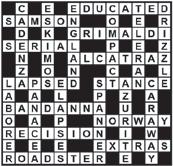
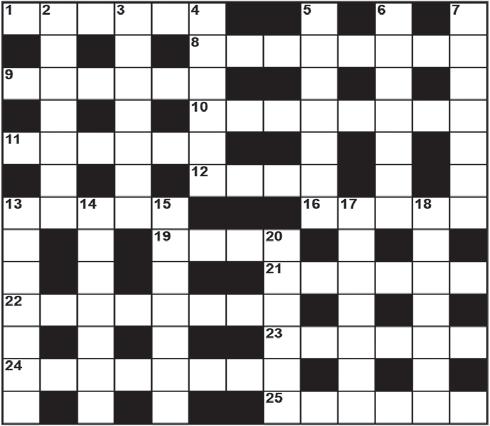
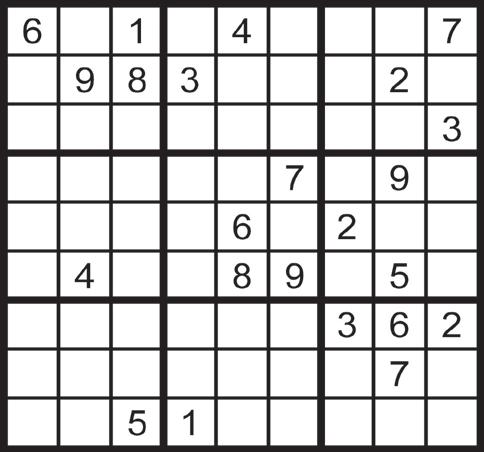
ADVERTISEMENT
1 Which term describes reputation or trustworthiness? (6)
8 Who became Emperor of Japan in 1926? (8)
9 Name the upper section of seats in a theatre. (6)
10 Which scale indicates the velocity of the wind? (8)
11 To go back on one’s word, is to do what? (6)
12 Name an establishment in which horses are kept for breeding. (4)
13 What is a remark that is incidental to the main subject? (5)
16 What is a regular order or arrangement? (5)
19 Name a republic in northern central Africa. (4)
21 To think highly of, is to do what? (6)
22 What is an unnaturally high-pitched voice, especially in a man? (8)
23 Name the vast grassy plains lying in the rain shadow of the Andes. (6)
24 What are cursory reviews of points of information? (8)
25 What might we call an inhabitant of the US? (6)
Solution next edition Down
2 What is the nickname of the Canberra NRL club? (7)
3 To have ordained, is to have done what? (7)
4 Name the ancient ruined city in Upper Egypt, on the Nile. (6)
5 What is a circular bandstand, especially one with a dome? (7)
6 Having two opposite qualities, is to be what? (7)
7 Name a game of chance. (7)
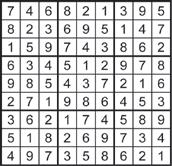
13 Which sea lies between PNG and the northern coast of Australia? (7)
14 Reykjavik is the capital of which Arctic island republic? (7)
15 Which term describes a level of command? (7)
17 What is a particular system of government called? (7)
18 What relates to a large allotment of land, especially in a rural area? (7)
20 Name the pathological accumulation of diluted lymph in body tissues and cavities. (6)
Energy efficient homes – tips, traps and a little science
MICHAEL DRAGE, founder of Reimagined Habitat, says: “Thank you to all the readers who contacted me regarding last month’s topic on airtightness. Keep the questions coming in, we love helping people upgrade or build better homes!”
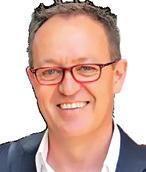
It’s all about thermal comfort. Our bodies work best between 20-25C and when we get outside of this we go into stress.
The further away from this range, the greater the stress, both physically and mentally. So thermal stability in our homes/offices is a key ingredient in helping our health. Believe it or not, more Australians die of cold than heat, and more die of cold than in Sweden. And it is mostly because of our homes.
I met with some people who grew up in Europe at Showroom Canberra on the weekend and they all talked about how cold and uncomfortable they felt in their Australian homes. But it doesn’t have to be like that. One lady I spoke to had built a Passive House and it has transformed her life.
The only requirement she had for the design was to be “warm and comfortable”. After growing up in poverty and never being warm she couldn’t stop talking about how she wears shorts and T-shirts in winter and how happy her family was. It was beautiful to hear her story. Governments around the world are incorporating energy standards for renters to deal with health issues. For Australia, have a look at healthyhomes.org.au for more information.
There are so many tips and tricks to talk about, but this is just on shading:
• Find ways to get more sun into the home in winter, and then close it in through good drapes once the sun goes down.
• For summer, make sure you have horizontal shading options to the north and vertical shading options to the east and west. Don’t let the heat come inside at all, not even on the curtains – it’s the best way to keep cool.
• Deciduous trees and vines are fantastic options.
• Check our website for the “reimagined balcony” for alternatives using simple reed panels.
• Make sure your shading is flexible to get sun in winter and keep it out in summer.
• Al frescos with solid roofs to the north are great in summer, but you will freeze in winter.
Another topic for the future is how biophilic design can also improve mental health.
More detailed information on this can be found on the blog page of our website.
For any questions, comments or queries, please email us at info@reimaginedhabitat.com.au or just give me a call.

